Ultrasonic Surface Rolling Process: Properties, Characterization, and Applications
Abstract
:1. Introduction
2. Mechanism of USRP
3. Microstructural Development during USRP
3.1. Microstructural Changes in Ferrous Based Materials Subjected to USRP
3.2. Microstructural Changes in Non-Ferrous Based Materials Subjected to USRP
3.2.1. Ti Alloys
3.2.2. Ni Alloys
3.2.3. Al Alloys
3.2.4. Mg Alloys
4. Effect of USRP on Mechanical and Tribological Properties of Engineering Materials
5. Applications and Recent Advances of USRP
6. Conclusions
Author Contributions
Funding
Institutional Review Board Statement
Informed Consent Statement
Data Availability Statement
Acknowledgments
Conflicts of Interest
Abbreviations
| BCC | Body Centered Cubic |
| DR | Deep Rolling |
| DCR | Deep Cold Rolling |
| DRX | Dynamic Recrystallization |
| EP-USRP | Electropulsing Assisted Ultrasonic Surface Rolling Process |
| GNS | Gradient Nanostrcutured Surface |
| HCF | High Cycle Fatigue |
| LCF | Low Cycle Fatigue |
| LSP | Laser Shock Peening |
| LSSP | Laser Shock Surface Patterning |
| RCS | Residual Compressive Stress |
| SP | Shot Peening |
| SPD | Severe Plastic Deformation |
| SSP | Severe Shot Peeing |
| SS | Stainless Steel |
| SURT | Surface Ultrasonic Rolling Treatment |
| SMAT | Surface Mechanical Attrition Treatment |
| SMGT | Surface Mechanical Grinding Treatment |
| SAED | Selected Area Diffraction |
| SFE | Stacking Fault Energy |
| SCC | Stress Corrosion Cracking |
| TEM | Transmission Electron Microscopy |
| USP | Ultrasonic Shot Peening |
| UIP | Ultrasonic Impact Peening |
| USR | Ultrasonic Surface Rolling |
| USRP | Ultrasonic Surface Rolling Process |
| USSR | Ultrasonic Severe Surface Rolling |
| UDCR | Ultrasonic Deep Cold Rolling |
| UNSM | Ultrasonic Nanocrystal Surface Modification |
References
- Azhari, A.; Sulaiman, S.; Rao, A.K.P. A review on the application of peening processes for surface treatment. IOP Conf. Ser. Mater. Sci. Eng. 2016, 114, 012002. [Google Scholar] [CrossRef] [Green Version]
- Geng, G.S.; Xu, J.H. Surface Integrity and Fatigue Property of a High Speed Milled Titanium Alloy. Adv. Mater. Res. 2008, 53–54, 305–310. [Google Scholar]
- Gao, Y.-K.; Yin, Y.-F.; Yao, M. Effects of shot peening on fatigue properties of 0Cr13Ni8Mo2Al steel. Mater. Sci. Technol. 2003, 19, 372–374. [Google Scholar] [CrossRef]
- Chen, M.; Xing, S.; Li, J.; He, J.; Lu, Y.; Jiang, C.; Ji, V. Surface residual stress and microstructure evolutions of Hastelloy X alloy after severe shot peening. Vacuum 2021, 187, 110136. [Google Scholar] [CrossRef]
- Maleki, E.; Farrahi, G.H.; Kashyzadeh, K.R.; Unal, O.; Gugaliano, M.; Bagherifard, S. Effects of Conventional and Severe Shot Peening on Residual Stress and Fatigue Strength of Steel AISI 1060 and Residual Stress Relaxation Due to Fatigue Loading: Experimental and Numerical Simulation. Met. Mater. Int. 2020, 27, 2575–2591. [Google Scholar] [CrossRef]
- Malaki, M.; Ding, H. A review of ultrasonic peening treatment. Mater. Des. 2015, 87, 1072–1086. [Google Scholar] [CrossRef]
- Yin, D.; Wang, D.; Jing, H.; Huo, L. The effects of ultrasonic peening treatment on the ultralong life fatigue behavior of welded joints. Mater. Des. 2010, 31, 3299–3307. [Google Scholar] [CrossRef]
- Safyari, M.; Moshtaghi, M. Role of Ultrasonic Shot Peening in Environmental Hydrogen Embrittlement Behavior of 7075-T6 Alloy. Hydrogen 2021, 2, 377–385. [Google Scholar] [CrossRef]
- Kumar, P.; Mahobia, G.; Mandal, S.; Singh, V.; Chattopadhyay, K. Enhanced corrosion resistance of the surface modified Ti-13Nb-13Zr alloy by ultrasonic shot peening. Corros. Sci. 2021, 189, 109597. [Google Scholar] [CrossRef]
- John, M.; Kalvala, P.; Misra, M.; Menezes, P. Peening Techniques for Surface Modification: Processes, Properties, and Applications. Materials 2021, 14, 3841. [Google Scholar] [CrossRef]
- Siddaiah, A.; Mao, B.; Liao, Y.; Menezes, P.L. Effect of Laser Shock Peening on the Wear-Corrosion Synergistic Behavior of an AZ31B Magnesium Alloy. J. Tribol. 2019, 142, 1–22. [Google Scholar] [CrossRef]
- Zhang, X.; Mao, B.; Siddaiah, A.; Menezes, P.L.; Liao, Y. Direct laser shock surface patterning of an AZ31B magnesium alloy: Microstructure evolution and friction performance. J. Mater. Process. Technol. 2019, 275, 116333. [Google Scholar] [CrossRef]
- Mao, B.; Siddaiah, A.; Menezes, P.L.; Liao, Y. Surface texturing by indirect laser shock surface patterning for manipulated friction coefficient. J. Mater. Process. Technol. 2018, 257, 227–233. [Google Scholar] [CrossRef]
- Chen, A.; Wang, C.; Jiang, J.; Ruan, H.; Lu, J. Microstructure Evolution and Mechanical Properties of Austenite Stainless Steel with Gradient Twinned Structure by Surface Mechanical Attrition Treatment. Nanomaterials 2021, 11, 1624. [Google Scholar] [CrossRef]
- Ran, M.; Zhang, C.; Wen, L.; Zhou, H.; Zheng, W. Effect of surface mechanical attrition treatment on stainless steel corrosion. Surf. Eng. 2020, 37, 739–748. [Google Scholar] [CrossRef]
- Nagarajan, B.; Kumar, D.; Fan, Z.; Castagne, S. Effect of deep cold rolling on mechanical properties and microstructure of nickel-based superalloys. Mater. Sci. Eng. A 2018, 728, 196–207. [Google Scholar] [CrossRef]
- Unal, O.; Karaoglanli, A.C.; Varol, R.; Kobayashi, A. Microstructure evolution and mechanical behavior of severe shot peened commercially pure titanium. Vacuum 2014, 110, 202–206. [Google Scholar] [CrossRef]
- He, Z.; Shen, Y.; Tao, J.; Chen, H.; Zeng, X.; Huang, X.; El-Aty, A.A. Laser shock peening regulating aluminum alloy surface residual stresses for enhancing the mechanical properties: Roles of shock number and energy. Surf. Coat. Technol. 2021, 421, 127481. [Google Scholar] [CrossRef]
- Sun, Q.; Han, Q.; Wang, S.; Xu, R. Microstructure, corrosion behaviour and thermal stability of AA 7150 after ultrasonic shot peening. Surf. Coat. Technol. 2020, 398, 126127. [Google Scholar] [CrossRef]
- Nie, B.; Zhang, Z.; Zhao, Z.; Zhong, Q. Very high cycle fatigue behavior of shot-peened 3Cr13 high strength spring steel. Mater. Des. 2013, 50, 503–508. [Google Scholar] [CrossRef]
- Liu, D.; Liu, D.; Zhang, X.; Liu, C.; Ao, N. Surface nanocrystallization of 17-4 precipitation-hardening stainless steel subjected to ultrasonic surface rolling process. Mater. Sci. Eng. A 2018, 726, 69–81. [Google Scholar] [CrossRef]
- Ting, W.; Dongpo, W.; Gang, L.; Baoming, G.; Ningxia, S. Investigations on the nano crystallization of 40Cr using ultrasonic surface rolling processing. Appl. Surf. Sci. 2008, 255, 1824–1829. [Google Scholar] [CrossRef]
- Kushwaha, A.K.; John, M.; Misra, M.; Menezes, P.L. Nanocrystalline Materials: Synthesis, Characterization, Properties, and Applications. Crystals 2021, 11, 1317. [Google Scholar] [CrossRef]
- Bozdana, A.T.; Gindy, N.; Li, H. Deep cold rolling with ultrasonic vibrations—A new mechanical surface enhancement technique. Int. J. Mach. Tools Manuf. 2005, 45, 713–718. [Google Scholar] [CrossRef]
- Lai, F.; Qu, S.; Lewis, R.; Slatter, T.; Fu, W.; Li, X. The influence of ultrasonic surface rolling on the fatigue and wear properties of 23-8N engine valve steel. Int. J. Fatigue 2019, 125, 299–313. [Google Scholar] [CrossRef]
- Zhang, Q.; Hu, Z.; Su, W.; Zhou, H.; Liu, C.; Yang, Y.; Qi, X. Microstructure and surface properties of 17-4PH stainless steel by ultrasonic surface rolling technology. Surf. Coat. Technol. 2017, 321, 64–73. [Google Scholar] [CrossRef]
- Qu, S.; Hu, X.; Lu, F.; Lai, F.; Liu, H.; Zhang, Y.; Li, X. Rolling contact fatigue properties of ultrasonic surface rolling treated 25CrNi2MoV steel under different lubricant viscosities. Int. J. Fatigue 2020, 142, 105970. [Google Scholar] [CrossRef]
- Dang, J.; Zhang, H.; An, Q.; Lian, G.; Li, Y.; Wang, H.; Chen, M. Surface integrity and wear behavior of 300M steel subjected to ultrasonic surface rolling process. Surf. Coat. Technol. 2021, 421, 127380. [Google Scholar] [CrossRef]
- Zhang, Y.-L.; Lai, F.-Q.; Qu, S.-G.; Liu, H.-P.; Jia, D.-S.; Du, S.-F. Effect of ultrasonic surface rolling on microstructure and rolling contact fatigue behavior of 17Cr2Ni2MoVNb steel. Surf. Coat. Technol. 2019, 366, 321–330. [Google Scholar] [CrossRef]
- Zhang, Y.; Huang, L.; Lu, F.; Qu, S.; Ji, V.; Hu, X.; Liu, H. Effects of ultrasonic surface rolling on fretting wear behaviors of a novel 25CrNi2MoV steel. Mater. Lett. 2020, 284, 128955. [Google Scholar] [CrossRef]
- Ren, Z.; Lai, F.; Qu, S.; Zhang, Y.; Li, X.; Yang, C. Effect of ultrasonic surface rolling on surface layer properties and fretting wear properties of titanium alloy Ti5Al4Mo6V2Nb1Fe. Surf. Coat. Technol. 2020, 389, 125612. [Google Scholar] [CrossRef]
- Liu, D.; Liu, D.; Guagliano, M.; Xu, X.; Fan, K.; Bagherifard, S. Contribution of ultrasonic surface rolling process to the fatigue properties of TB8 alloy with body-centered cubic structure. J. Mater. Sci. Technol. 2020, 61, 63–74. [Google Scholar] [CrossRef]
- Liu, Z.; Gao, C.; Liu, X.; Liu, R.; Xiao, Z. Improved surface integrity of Ti6Al4V fabricated by selective electron beam melting using ultrasonic surface rolling processing. J. Mater. Process. Technol. 2021, 297, 117264. [Google Scholar] [CrossRef]
- Lei, L.; Zhao, Q.; Zhao, Y.; Wu, C.; Huang, S.; Jia, W.; Zeng, W. Gradient nanostructure, phase transformation, amorphization and enhanced strength-plasticity synergy of pure titanium manufactured by ultrasonic surface rolling. J. Mater. Process. Technol. 2021, 299, 117322. [Google Scholar] [CrossRef]
- Li, Y.; Lian, G.; Geng, J.; Song, C.; Chen, D.; Wang, H. Effects of ultrasonic rolling on the surface integrity of in-situ TiB2/2024Al composite. J. Mater. Process. Technol. 2021, 293, 117068. [Google Scholar] [CrossRef]
- Lu, L.X.; Sun, J.; Li, L.; Xiong, Q.C. Study on surface characteristics of 7050-T7451 aluminum alloy by ultrasonic surface rolling process. Int. J. Adv. Manuf. Technol. 2016, 87, 2533–2539. [Google Scholar] [CrossRef]
- Xu, X.; Liu, D.; Zhang, X.; Liu, C.; Liu, D. Mechanical and corrosion fatigue behaviors of gradient structured 7B50-T7751 aluminum alloy processed via ultrasonic surface rolling. J. Mater. Sci. Technol. 2019, 40, 88–98. [Google Scholar] [CrossRef]
- Geng, J.; Yan, Z.; Zhang, H.; Liu, Y.; Dong, P.; Yuan, S.; Wang, W. Microstructure and Mechanical Properties of AZ31B Magnesium Alloy via Ultrasonic Surface Rolling Process. Adv. Eng. Mater. 2021, 2100076. [Google Scholar] [CrossRef]
- Zhou, M.; Xu, Y.; Liu, Y.; Duan, M.; Xia, Z.; Huang, L.; Zhu, R.; Ye, H.; Peng, L.; Wu, Y.; et al. Microstructures and mechanical properties of Mg-15Gd-1Zn-0.4Zr alloys treated by ultrasonic surface rolling process. Mater. Sci. Eng. A 2021, 828, 141881. [Google Scholar] [CrossRef]
- Ye, H.; Sun, X.; Liu, Y.; Rao, X.-X.; Gu, Q. Effect of ultrasonic surface rolling process on mechanical properties and corrosion resistance of AZ31B Mg alloy. Surf. Coat. Technol. 2019, 372, 288–298. [Google Scholar] [CrossRef]
- Liu, J.; Chen, D.; Su, B.; Chen, D.; Ren, Z.; Zou, D.; Liu, K. Effects of ultrasonic surface rolling processing on the corrosion properties of uranium metal. J. Nucl. Mater. 2021, 556, 153239. [Google Scholar] [CrossRef]
- Xia, T.; Zeng, L.; Zhang, X.; Liu, J.; Zhang, W.; Liang, T.; Yang, B. Enhanced corrosion resistance of a Cu 10Ni alloy in a 3.5 wt% NaCl solution by means of ultrasonic surface rolling treatment. Surf. Coat. Technol. 2019, 363, 390–399. [Google Scholar] [CrossRef]
- Zhang, C.; Dong, Y.; Ye, C. Recent Developments and Novel Applications of Laser Shock Peening: A Review. Adv. Eng. Mater. 2021, 23, 2001216. [Google Scholar] [CrossRef]
- Liu, R.; Yuan, S.; Lin, N.; Zeng, Q.; Wang, Z.; Wu, Y. Application of ultrasonic nanocrystal surface modification (UNSM) technique for surface strengthening of titanium and titanium alloys: A mini review. J. Mater. Res. Technol. 2021, 11, 351–377. [Google Scholar] [CrossRef]
- Sundar, R.; Ganesh, P.; Gupta, R.K.; Ragvendra, G.; Pant, B.K.; Kain, V.; Ranganathan, K.; Kaul, R.; Bindra, K.S. Laser Shock Peening and its Applications: A Review. Lasers Manuf. Mater. Process. 2019, 6, 424–463. [Google Scholar]
- Wang, X.; Chen, L.; Liu, P.; Lin, G.; Ren, X. Enhancement of Fatigue Endurance Limit through Ultrasonic Surface Rolling Processing in EA4T Axle Steel. Metals 2020, 10, 830. [Google Scholar] [CrossRef]
- Liu, Y.; Wang, L.; Wang, D. Finite element modeling of ultrasonic surface rolling process. J. Mater. Process. Technol. 2011, 211, 2106–2113. [Google Scholar] [CrossRef]
- Liu, P.; Yu, R.; Gao, X.; Zhang, G. Influence of Surface Ultrasonic Rolling on Microstructure and Corrosion Property of T4003 Ferritic Stainless Steel Welded Joint. Metals 2020, 10, 1081. [Google Scholar] [CrossRef]
- Liu, P.; Lin, Z.; Liu, C.; Zhao, X.; Ren, R. Effect of Surface Ultrasonic Rolling Treatment on Rolling Contact Fatigue Life of D2 Wheel Steel. Materials 2020, 13, 5438. [Google Scholar] [CrossRef] [PubMed]
- Xu, C.; Liang, Y.; Yang, M.; Yu, J.; Peng, X. Effects of the Ultrasonic Assisted Surface Rolling Process on the Fatigue Crack Initiation Position Distribution and Fatigue Life of 51CrV4 Spring Steel. Materials 2021, 14, 2565. [Google Scholar] [CrossRef] [PubMed]
- Luan, X.; Zhao, W.; Liang, Z.; Xiao, S.; Liang, G.; Chen, Y.; Zou, S.; Wang, X. Experimental study on surface integrity of ultra-high-strength steel by ultrasonic hot rolling surface strengthening. Surf. Coat. Technol. 2020, 392, 125745. [Google Scholar] [CrossRef]
- Wang, B.; Yin, Y.; Gao, Z.; Hou, Z.; Jiang, W. Influence of the ultrasonic surface rolling process on stress corrosion cracking susceptibility of high strength pipeline steel in neutral pH environment. RSC Adv. 2017, 7, 36876–36885. [Google Scholar] [CrossRef] [Green Version]
- Liu, Y.; Sun, J.; Fu, Y.; Xu, B.; Li, B.; Xu, S.; Huang, P.; Cheng, J.; Han, Y.; Han, J.; et al. Tuning strength-ductility combination on selective laser melted 316L stainless steel through gradient heterogeneous structure. Addit. Manuf. 2021, 48, 102373. [Google Scholar] [CrossRef]
- Li, C.; Zhu, R.; Zhang, X.; Huang, P.; Wang, X. Impact of surface ultrasonic rolling on cavitation erosion behavior of 304 stainless steel. Surf. Coat. Technol. 2019, 383, 125280. [Google Scholar] [CrossRef]
- She, D.; Liu, S.; Kang, J.; Yue, W.; Zhu, L.; Wang, C.; Wang, H.; Ma, G.; Zhong, L. Abrasive Wear Resistance of Plasma-Nitrided Ti Enhanced by Ultrasonic Surface Rolling Processing Pre-Treatment. Materials 2019, 12, 3260. [Google Scholar] [CrossRef] [PubMed] [Green Version]
- Li, G.; Qu, S.; Xie, M.; Ren, Z.; Li, X. Effect of Multi-Pass Ultrasonic Surface Rolling on the Mechanical and Fatigue Properties of HIP Ti-6Al-4V Alloy. Materials 2017, 10, 133. [Google Scholar] [CrossRef] [PubMed] [Green Version]
- Liu, C.; Liu, D.; Zhang, X.; Ao, N.; Xu, X.; Liu, D.; Yang, J. Fretting fatigue characteristics of Ti-6Al-4V alloy with a gradient nanostructured surface layer induced by ultrasonic surface rolling process. Int. J. Fatigue 2019, 125, 249–260. [Google Scholar] [CrossRef]
- Luo, X.; Ren, X.; Jin, Q.; Qu, H.; Hou, H. Microstructural evolution and surface integrity of ultrasonic surface rolling in Ti6Al4V alloy. J. Mater. Res. Technol. 2021, 13, 1586–1598. [Google Scholar] [CrossRef]
- Liu, C.; Liu, D.; Zhang, X.; He, G.; Xu, X.; Ao, N.; Ma, A.; Liu, D. On the influence of ultrasonic surface rolling process on surface integrity and fatigue performance of Ti-6Al-4V alloy. Surf. Coat. Technol. 2019, 370, 24–34. [Google Scholar] [CrossRef]
- Wang, Z.; Liu, Z.; Gao, C.; Wong, K.; Ye, S.; Xiao, Z. Modified wear behavior of selective laser melted Ti6Al4V alloy by direct current assisted ultrasonic surface rolling process. Surf. Coat. Technol. 2019, 381, 125122. [Google Scholar] [CrossRef]
- Tan, L.; Zhang, D.; Yao, C.; Ren, J. Effects of Ultrasonic Surface Rolling Parameters on Surface Integrity of TC17 Alloy. J. Mater. Eng. Perform. 2019, 28, 6736–6745. [Google Scholar] [CrossRef]
- Sun, Z.; Ren, S.; Hu, T.; Li, B. Effect of Ultrasonic Surface Rolling Process on the Hot Compression Behavior of Inconel 718 Superalloy at 700 °C. Nanomaterials 2019, 9, 658. [Google Scholar] [CrossRef] [Green Version]
- Liu, J.; Liu, J.; Zhang, X.; Ahmad, T.; Liang, T.; Zeng, L.; Wang, C.; Yang, B. Effect of Ultrasonic Surface Rolling Treatment on Corrosion Behavior of Alloy 690. Metals 2020, 10, 917. [Google Scholar] [CrossRef]
- Yin, M.-G.; Cai, Z.-B.; Zhang, Z.-X.; Yue, W. Effect of ultrasonic surface rolling process on impact-sliding wear behavior of the 690 alloy. Tribol. Int. 2019, 147, 105600. [Google Scholar] [CrossRef]
- Liu, J.; Zhang, X.; Cui, Z.; Ahmad, T.; Wang, C.; Hong, N.; Liang, T.; Yang, B. Effects of ultrasonic surface rolling processing and plasma nitriding on the fretting wear behavior of Inconel 690TT. Surf. Coat. Technol. 2020, 402, 126312. [Google Scholar] [CrossRef]
- Liu, J.; Zhang, X.; Cui, Z.; Yu, J.; Liu, J.; Zou, Y.; Liang, T. Experimental investigation on ultrasonic surface rolling of Inconel 690TT. Mater. Manuf. Process. 2021, 1–10. [Google Scholar] [CrossRef]
- Xu, G.; Wang, C.; Li, Q.; Zhang, X.; Zhu, Z.; Liang, T.; Yang, B. Effects of ultrasonic rolling on surface performance of 7B85-T6 alloy. Mater. Manuf. Process. 2020, 35, 250–257. [Google Scholar] [CrossRef]
- Zhao, X.; Liu, K.; Xu, D.; Liu, Y.; Hu, C. Effects of Ultrasonic Surface Rolling Processing and Subsequent Recovery Treatment on the Wear Resistance of AZ91D Mg Alloy. Materials 2020, 13, 5705. [Google Scholar] [CrossRef] [PubMed]
- Han, J.; Wang, C.; Song, Y.M.; Liu, Z.Y.; Sun, J.P.; Zhao, J.Y. Simultaneously Improving Mechanical Properties and Corrosion Resistance of as-Cast AZ91 Mg Alloy by Ultrasonic Surface Rolling. Int. J. Miner. Met. Mater. Available online: http://ijmmm.ustb.edu.cn/article/doi/10.1007/s12613-021-2294-2 (accessed on 28 October 2021). [CrossRef]
- Ralls, A.M.; Kumar, P.; Menezes, P.L. Tribological Properties of Additive Manufactured Materials for Energy Applications: A Review. Processes 2020, 9, 31. [Google Scholar] [CrossRef]
- Ao, N.; Liu, D.; Liu, C.; Zhang, X.; Liu, D. Face-centered titanium induced by ultrasonic surface rolling process in Ti-6Al-4V alloy and its tensile behavior. Mater. Charact. 2018, 145, 527–533. [Google Scholar] [CrossRef]
- Li, G.; Qu, S.; Guan, S.; Wang, F. Study on the tensile and fatigue properties of the heat-treated HIP Ti-6Al-4V alloy after ultrasonic surface rolling treatment. Surf. Coat. Technol. 2019, 379, 124971. [Google Scholar] [CrossRef]
- Zhao, X.; Xue, G.; Liu, Y. Gradient crystalline structure induced by ultrasonic impacting and rolling and its effect on fatigue behavior of TC11 titanium alloy. Results Phys. 2017, 7, 1845–1851. [Google Scholar] [CrossRef]
- Liu, C.; Liu, D.; Zhang, X.; Liu, D.; Ma, A.; Ao, N.; Xu, X. Improving fatigue performance of Ti-6Al-4V alloy via ultrasonic surface rolling process. J. Mater. Sci. Technol. 2019, 35, 1555–1562. [Google Scholar] [CrossRef]
- Menezes, P.L.; Nosonovsky, M.; Kailas, S.V.; Lovell, M.R. Friction and Wear. In Tribology for Scientists and Engineers: From Basics to Advanced Concepts, 1st ed.; Menezes, P.L., Nosonovsky, M., Ingole, S.P., Kailas, S.V., Lovell, M.R., Eds.; Springer: New York, NY, USA, 2013. [Google Scholar]
- Duan, Y.; Qu, S.; Jia, S.; Li, X. Effects of ultrasonic surface rolling processing on microstructure and wear properties of high-carbon high-chromium steel. Surf. Coat. Technol. 2021, 422, 127531. [Google Scholar] [CrossRef]
- Li, G.; Qu, S.; Pan, Y.; Li, X. Effects of the different frequencies and loads of ultrasonic surface rolling on surface mechanical properties and fretting wear resistance of HIP Ti-6Al-4V alloy. Appl. Surf. Sci. 2016, 389, 324–334. [Google Scholar] [CrossRef]
- Zhao, W.; Liu, D.; Zhang, X.; Zhou, Y.; Zhang, R.; Zhang, H.; Ye, C. Improving the fretting and corrosion fatigue performance of 300M ultra-high strength steel using the ultrasonic surface rolling process. Int. J. Fatigue 2018, 121, 30–38. [Google Scholar] [CrossRef]
- Chen, D.; Hu, Y.; Li, H.; Li, F.; Guo, L.; Pan, Q.; Ma, C.; Chen, D.; Liu, J.; Liu, K. The oxidation behavior of uranium treated by ultrasonic surface rolling process. Corros. Sci. 2021, 194, 109917. [Google Scholar] [CrossRef]
- Dang, J.; An, Q.; Lian, G.; Zuo, Z.; Li, Y.; Wang, H.; Chen, M. Surface modification and its effect on the tensile and fatigue properties of 300M steel subjected to ultrasonic surface rolling process. Surf. Coat. Technol. 2021, 422, 127566. [Google Scholar] [CrossRef]
- Zhang, K.; Liu, Y.; Liu, S.; Zhang, X.; Qian, B.; Zhang, C.; Tu, S. Coordinated bilateral ultrasonic surface rolling process on aero-engine blades. Int. J. Adv. Manuf. Technol. 2019, 105, 4415–4428. [Google Scholar] [CrossRef]
- Wu, J.; Zhao, J.; Qiao, H.; Hu, X.; Yang, Y. The New Technologies Developed from Laser Shock Processing. Materials 2020, 13, 1453. [Google Scholar] [CrossRef] [PubMed] [Green Version]
- Wang, Z.; Xiao, Z.; Huang, C.; Weiwen, Z.; Zhang, W. Influence of Ultrasonic Surface Rolling on Microstructure and Wear Behavior of Selective Laser Melted Ti-6Al-4V Alloy. Materials 2017, 10, 1203. [Google Scholar] [CrossRef] [Green Version]
- Cui, Z.; Mi, Y.; Qiu, D.; Dong, P.; Qin, Z.; Gong, D.; Li, W. Microstructure and mechanical properties of additively manufactured CrMnFeCoNi high-entropy alloys after ultrasonic surface rolling process. J. Alloys Compd. 2021, 887, 161393. [Google Scholar] [CrossRef]
- Ren, K.; Yue, W.; Zhang, H. Surface modification of Ti6Al4V based on ultrasonic surface rolling processing and plasma nitriding for enhanced bone regeneration. Surf. Coat. Technol. 2018, 349, 602–610. [Google Scholar] [CrossRef]
- Yang, J.; Liu, D.; Zhang, X.; Liu, M.; Zhao, W.; Liu, C. The effect of ultrasonic surface rolling process on the fretting fatigue property of GH4169 superalloy. Int. J. Fatigue 2019, 133, 105373. [Google Scholar] [CrossRef]
- Sunder, S.; Miller, N.; Shoesmith, D. Corrosion of uranium dioxide in hydrogen peroxide solutions. Corros. Sci. 2004, 46, 1095–1111. [Google Scholar] [CrossRef]
- Handley-Sidhu, S.; Keith-Roach, M.J.; Lloyd, J.; Vaughan, D.J. A review of the environmental corrosion, fate and bioavailability of munitions grade depleted uranium. Sci. Total Environ. 2010, 408, 5690–5700. [Google Scholar] [CrossRef]
- Maleki, E.; Unal, O.; Guagliano, M.; Bagherifard, S. The effects of shot peening, laser shock peening and ultrasonic nanocrystal surface modification on the fatigue strength of Inconel 718. Mater. Sci. Eng. A 2021, 810, 141029. [Google Scholar] [CrossRef]
- Cao, X.; Pyoun, Y.; Murakami, R. Fatigue properties of a S45C steel subjected to ultrasonic nanocrystal surface modification. Appl. Surf. Sci. 2010, 256, 6297–6303. [Google Scholar] [CrossRef]
- Cherif, A.; Pyoun, Y.; Scholtes, B. Effects of Ultrasonic Nanocrystal Surface Modification (UNSM) on Residual Stress State and Fatigue Strength of AISI 304. J. Mater. Eng. Perform. 2009, 19, 282–286. [Google Scholar] [CrossRef]
- Yasuoka, M.; Wang, P.; Zhang, K.; Qiu, Z.; Kusaka, K.; Pyoun, Y.-S.; Murakami, R.I. Improvement of the fatigue strength of SUS304 austenite stainless steel using ultrasonic nanocrystal surface modification. Surf. Coat. Technol. 2013, 218, 93–98. [Google Scholar] [CrossRef]
- Wu, B.; Zhang, J.; Zhang, L.; Pyoun, Y.-S.; Murakami, R.-I. Effect of ultrasonic nanocrystal surface modification on surface and fatigue properties of quenching and tempering S45C steel. Appl. Surf. Sci. 2014, 321, 318–330. [Google Scholar] [CrossRef]
- Amanov, A.; Karimbaev, R. Improvement in frictional and fatigue performances of AISI 4150H steel by dual ultrasonic nanocrystal surface modification for ball screw applications. Tribol. Int. 2021, 161, 107092. [Google Scholar] [CrossRef]
- Zhang, H.; Chiang, R.; Qin, H.; Ren, Z.; Hou, X.; Lin, D.; Doll, G.L.; Vasudevan, V.K.; Dong, Y.; Ye, C. The effects of ultrasonic nanocrystal surface modification on the fatigue performance of 3D-printed Ti64. Int. J. Fatigue 2017, 103, 136–146. [Google Scholar] [CrossRef]
- Gujba, A.K.; Ren, Z.; Dong, Y.; Ye, C.; Medraj, M. Effect of ultrasonic nanocrystalline surface modification on the water droplet erosion performance of Ti-6Al-4V. Surf. Coat. Technol. 2016, 307, 157–170. [Google Scholar] [CrossRef]
- Kheradmandfard, M.; Kashani-Bozorg, S.F.; Lee, J.S.; Kim, C.-L.; Hanzaki, A.Z.; Pyun, Y.-S.; Cho, S.-W.; Amanov, A.; Kim, D.-E. Significant improvement in cell adhesion and wear resistance of biomedical β-type titanium alloy through ultrasonic nanocrystal surface modification. J. Alloys Compd. 2018, 762, 941–949. [Google Scholar] [CrossRef]
- Kheradmandfard, M.; Kashani-Bozorg, S.F.; Kim, C.-L.; Hanzaki, A.Z.; Pyoun, Y.-S.; Kim, J.-H.; Amanov, A.; Kim, D.-E. Nanostructured β-type titanium alloy fabricated by ultrasonic nanocrystal surface modification. Ultrason. Sonochem. 2017, 39, 698–706. [Google Scholar] [CrossRef]
- Efe, Y.; Karademir, I.; Husem, F.; Maleki, E.; Karimbaev, R.; Amanov, A.; Unal, O. Enhancement in microstructural and mechanical performance of AA7075 aluminum alloy via severe shot peening and ultrasonic nanocrystal surface modification. Appl. Surf. Sci. 2020, 528, 146922. [Google Scholar] [CrossRef]
- Oh, J.; Park, H.D.; Gwak, M.; Lee, J.; Son, S.; Amanov, A.; Kim, H.S.; Seol, J.B.; Sung, H.; Kim, J.G. Mechanical property enhancement in gradient structured aluminum alloy by ultrasonic nanocrystalline surface modification. Mater. Sci. Eng. A 2021, 812, 141101. [Google Scholar] [CrossRef]
- Zhang, R.; Zhao, W.; Zhang, H.; Yang, W.; Wang, G.-X.; Dong, Y.; Ye, C. Fatigue performance rejuvenation of corroded 7075-T651 aluminum alloy through ultrasonic nanocrystal surface modification. Int. J. Fatigue 2021, 153, 106463. [Google Scholar] [CrossRef]
- Amanov, A.; Penkov, O.; Pyun, Y.-S.; Kim, D.-E. Effects of ultrasonic nanocrystalline surface modification on the tribological properties of AZ91D magnesium alloy. Tribol. Int. 2012, 54, 106–113. [Google Scholar] [CrossRef]
- Hou, X.; Qin, H.; Gao, H.; Mankoci, S.; Zhang, R.; Zhou, X.; Ren, Z.; Doll, G.L.; Martini, A.; Sahai, N.; et al. A systematic study of mechanical properties, corrosion behavior and biocompatibility of AZ31B Mg alloy after ultrasonic nanocrystal surface modification. Mater. Sci. Eng. C 2017, 78, 1061–1071. [Google Scholar] [CrossRef] [PubMed]
- Amanov, A. Improvement in mechanical properties and fretting wear of Inconel 718 superalloy by ultrasonic nanocrystal surface modification. Wear 2020, 446–447, 203208. [Google Scholar] [CrossRef]
- Amanov, A.; Pyun, Y.-S.; Sasaki, S. Effects of ultrasonic nanocrystalline surface modification (UNSM) technique on the tribological behavior of sintered Cu-based alloy. Tribol. Int. 2014, 72, 187–197. [Google Scholar] [CrossRef]
- Maleki, A.; Teimouri, R. Optimization of ultrasonic nanocrystalline surface modification of copper and its influence on fatigue life. Int. J. Light. Mater. Manuf. 2020, 4, 156–164. [Google Scholar] [CrossRef]
- Biffi, C.; Bassani, P.; Nematollahi, M.; Moghaddam, N.S.; Amerinatanzi, A.; Mahtabi, M.; Elahinia, M.; Tuissi, A. Effect of Ultrasonic Nanocrystal Surface Modification on the Microstructure and Martensitic Transformation of Selective Laser Melted Nitinol. Materials 2019, 12, 3068. [Google Scholar] [CrossRef] [Green Version]
- Ma, C.; Andani, M.T.; Qin, H.; Moghaddam, N.S.; Ibrahim, H.; Jahadakbar, A.; Amerinatanzi, A.; Ren, Z.; Zhang, H.; Doll, G.L.; et al. Improving surface finish and wear resistance of additive manufactured nickel-titanium by ultrasonic nano-crystal surface modification. J. Mater. Process. Technol. 2017, 249, 433–440. [Google Scholar] [CrossRef]
- Listyawan, T.A.; Lee, H.; Park, N. A new guide for improving mechanical properties of non-equiatomic FeCoCrMnNi medium- and high-entropy alloys with ultrasonic nanocrystal surface modification process. J. Mater. Sci. Technol. 2020, 59, 37–43. [Google Scholar] [CrossRef]
- Listyawan, T.A.; Lee, H.; Park, N.; Lee, U. Microstructure and mechanical properties of CoCrFeMnNi high entropy alloy with ultrasonic nanocrystal surface modification process. J. Mater. Sci. Technol. 2020, 57, 123–130. [Google Scholar] [CrossRef]
- Bae, J.W.; Asghari-Rad, P.; Amanov, A.; Kim, H.S. Gradient-structured ferrous medium-entropy alloys with enhanced strength-ductility synergy by ultrasonic nanocrystalline surface modification. Mater. Sci. Eng. A 2021, 826, 141966. [Google Scholar] [CrossRef]
- Ye, Y.; Wang, H.; Tang, G.; Song, G. Effect of Electropulsing-Assisted Ultrasonic Nanocrystalline Surface Modification on the Surface Mechanical Properties and Microstructure of Ti-6Al-4V Alloy. J. Mater. Eng. Perform. 2018, 27, 2394–2403. [Google Scholar] [CrossRef]
- Liu, J.; Suslov, S.; Ren, Z.; Dong, Y.; Ye, C. Microstructure evolution in Ti64 subjected to laser-assisted ultrasonic nanocrystal surface modification. Int. J. Mach. Tools Manuf. 2018, 136, 19–33. [Google Scholar] [CrossRef]
- Amanov, A.; Karimbaev, R.; Maleki, E.; Unal, O.; Pyun, Y.-S.; Amanov, T. Effect of combined shot peening and ultrasonic nanocrystal surface modification processes on the fatigue performance of AISI 304. Surf. Coat. Technol. 2018, 358, 695–705. [Google Scholar] [CrossRef]
- Wang, H.; Song, G.; Tang, G. Enhanced surface properties of austenitic stainless steel by electropulsing-assisted ultrasonic surface rolling process. Surf. Coat. Technol. 2015, 282, 149–154. [Google Scholar] [CrossRef]
- Xu, Z.; Tang, G.; Tian, S.; Ding, F.; Tian, H. Research of electroplastic rolling of AZ31 Mg alloy strip. J. Mater. Process. Technol. 2006, 182, 128–133. [Google Scholar] [CrossRef]
- Tang, G.; Zhang, J.; Zheng, M.; Zhang, J.; Fang, W.; Li, Q. Experimental study of electroplastic effect on stainless steel wire 304L. Mater. Sci. Eng. A 2000, 281, 263–267. [Google Scholar] [CrossRef]
- Liu, T.; Li, X.; Tang, G.; Song, G. Effect of ultrasonic impact treatment assisted with high energy electropulsing on microstructure of D36 carbon steel. J. Mater. Res. 2016, 31, 3956–3967. [Google Scholar] [CrossRef]
- Kuang, J.; Li, X.; Zhang, R.; Ye, Y.; Luo, A.A.; Tang, G. Enhanced rollability of Mg 3Al 1Zn alloy by pulsed electric current: A comparative study. Mater. Des. 2016, 100, 204–216. [Google Scholar] [CrossRef]
- Zheng, Y.; Tang, G.; Kuang, J.; Zheng, X. Effect of electropulse on solid solution treatment of 6061 aluminum alloy. J. Alloys Compd. 2014, 615, 849–853. [Google Scholar] [CrossRef]
- Jiang, Y.; Tang, G.; Shek, C.H.; Xie, J.; Xu, Z.; Zhang, Z. Mechanism of electropulsing induced recrystallization in a cold-rolled Mg–9Al–1Zn alloy. J. Alloys Compd. 2012, 536, 94–105. [Google Scholar] [CrossRef]
- Zhu, R.; Liu, J.; Tang, G.; Shi, S.-Q.; Fu, M.; Tse, Z.T.H. The improved superelasticity of NiTi alloy via electropulsing treatment for minutes. J. Alloys Compd. 2014, 584, 225–231. [Google Scholar] [CrossRef]
- Wang, H.; Song, G.; Tang, G. Effect of electropulsing on surface mechanical properties and microstructure of AISI 304 stainless steel during ultrasonic surface rolling process. Mater. Sci. Eng. A 2016, 662, 456–467. [Google Scholar] [CrossRef]
- Ye, Y.; Kure-Chu, S.-Z.; Sun, Z.; Li, X.; Wang, H.; Tang, G. Nanocrystallization and enhanced surface mechanical properties of commercial pure titanium by electropulsing-assisted ultrasonic surface rolling. Mater. Des. 2018, 149, 214–227. [Google Scholar] [CrossRef]
- Wang, H.; Song, G.; Tang, G. Evolution of surface mechanical properties and microstructure of Ti 6Al 4V alloy induced by electropulsing-assisted ultrasonic surface rolling process. J. Alloys Compd. 2016, 681, 146–156. [Google Scholar] [CrossRef]
- Zhao, W.; Liu, D.; Qin, H.; Zhang, X.; Zhang, H.; Zhang, R.; Ren, Z.; Ma, C.; Amanov, A.; Pyun, Y.-S.; et al. The effect of ultrasonic nanocrystal surface modification on low temperature nitriding of ultra-high strength steel. Surf. Coat. Technol. 2019, 375, 205–214. [Google Scholar] [CrossRef]
- Kim, M.-S.; Oh, W.-J.; Baek, G.-Y.; Jo, Y.-K.; Lee, K.-Y.; Park, S.-H.; Shim, D.-S. Ultrasonic nanocrystal surface modification of high-speed tool steel (AISI M4) layered via direct energy deposition. J. Mater. Process. Technol. 2019, 277, 116420. [Google Scholar] [CrossRef]
- Xie, J.; Zhang, S.; Sun, Y.; Hao, Y.; An, B.; Li, Q.; Wang, C.-A. Microstructure and mechanical properties of high entropy CrMnFeCoNi alloy processed by electopulsing-assisted ultrasonic surface rolling. Mater. Sci. Eng. A 2020, 795, 140004. [Google Scholar] [CrossRef]
- Ye, Y.-D.; Li, X.-P.; Sun, Z.-Y.; Wang, H.-B.; Tang, G.-Y. Enhanced Surface Mechanical Properties and Microstructure Evolution of Commercial Pure Titanium Under Electropulsing-Assisted Ultrasonic Surface Rolling Process. Acta Met. Sin. (Engl. Lett.) 2018, 31, 1272–1280. [Google Scholar] [CrossRef] [Green Version]
- Sun, Z.; Ye, Y.; Xu, J.; Hu, T.; Ren, S.; Li, B. Effect of Electropulsing on Surface Mechanical Behavior and Microstructural Evolution of Inconel 718 during Ultrasonic Surface Rolling Process. J. Mater. Eng. Perform. 2019, 28, 6789–6799. [Google Scholar] [CrossRef]
- Zhang, Y.; Qu, S.; Lu, F.; Lai, F.; Ji, V.; Liu, H.; Li, X. Microstructures and rolling contact fatigue behaviors of 17Cr2Ni2MoVNb steel under combined ultrasonic surface rolling and shot peening. Int. J. Fatigue 2020, 141, 105867. [Google Scholar] [CrossRef]
- Ren, S.; Zhang, Y.; Zhao, Y.; An, Z.; Xue, F.; Yao, J.; Sun, Z.; Chang, J. Enhanced Surface Properties and Microstructure Evolution of Cr12MoV Using Ultrasonic Surface Rolling Process Combined with Deep Cryogenic Treatment. J. Mater. Eng. Perform. 2019, 28, 1132–1140. [Google Scholar] [CrossRef]
- Hao, J.; Hu, F.; Le, X.; Liu, H.; Yang, H.; Han, J. Microstructure and high-temperature wear behaviour of Inconel 625 multi-layer cladding prepared on H13 mould steel by a hybrid additive manufacturing method. J. Mater. Process. Technol. 2020, 291, 117036. [Google Scholar] [CrossRef]
- Ye, H.; Zhu, J.; Liu, Y.; Liu, W.; Wang, D. Microstructure and mechanical properties of laser cladded Cr Ni alloy by hard turning (HT) and ultrasonic surface rolling (USR). Surf. Coat. Technol. 2020, 393, 125806. [Google Scholar] [CrossRef]
- Wang, J.; Qu, S.; Lai, F.; Hu, X.; Deng, Y.; Li, X. Synergistic effects of a combined surface modification technology on rolling contact fatigue behaviors of 20CrMoH steel under different contact stresses. Int. J. Fatigue 2021, 153, 106487. [Google Scholar] [CrossRef]
- Meng, Y.; Deng, J.; Lu, Y.; Wang, S.; Wu, J.; Sun, W. Fabrication of AlTiN coatings deposited on the ultrasonic rolling textured substrates for improving coatings adhesion strength. Appl. Surf. Sci. 2021, 550, 149394. [Google Scholar] [CrossRef]
- Ao, N.; Liu, D.; Zhang, X.; Liu, C.; Yang, J.; Liu, D. Surface nanocrystallization of body-centered cubic beta phase in Ti–6Al–4V alloy subjected to ultrasonic surface rolling process. Surf. Coat. Technol. 2019, 361, 35–41. [Google Scholar] [CrossRef]
- Minglong, C.; Deyuan, Z.; Huawei, C.; Wei, Q.; Jinsheng, L. Surface nano crystallization and its effect on fatigue performance of high-strength materials treated by ultrasonic rolling process. Int. J. Adv. Manuf. Technol. 2015, 83, 123–131. [Google Scholar] [CrossRef]
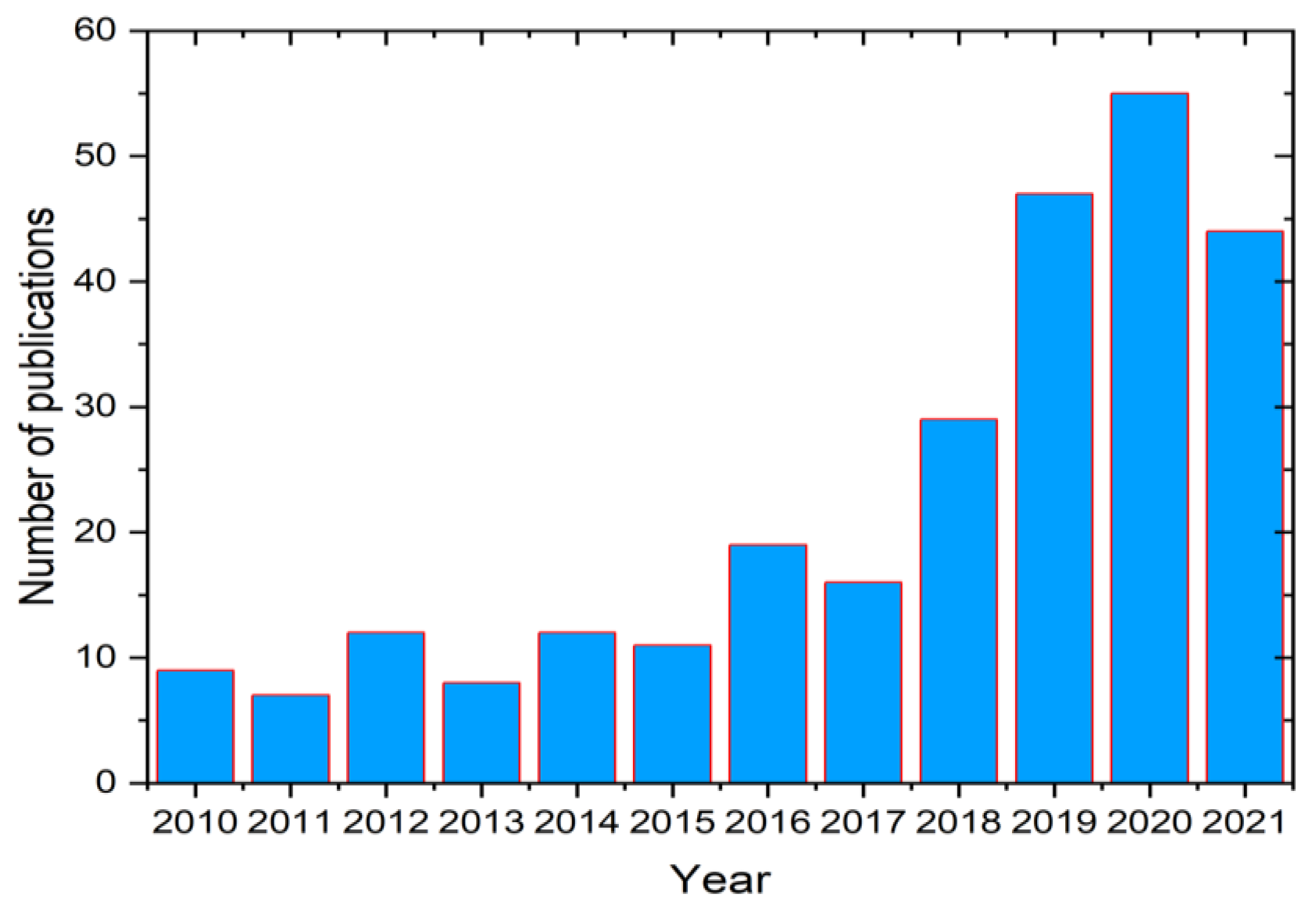


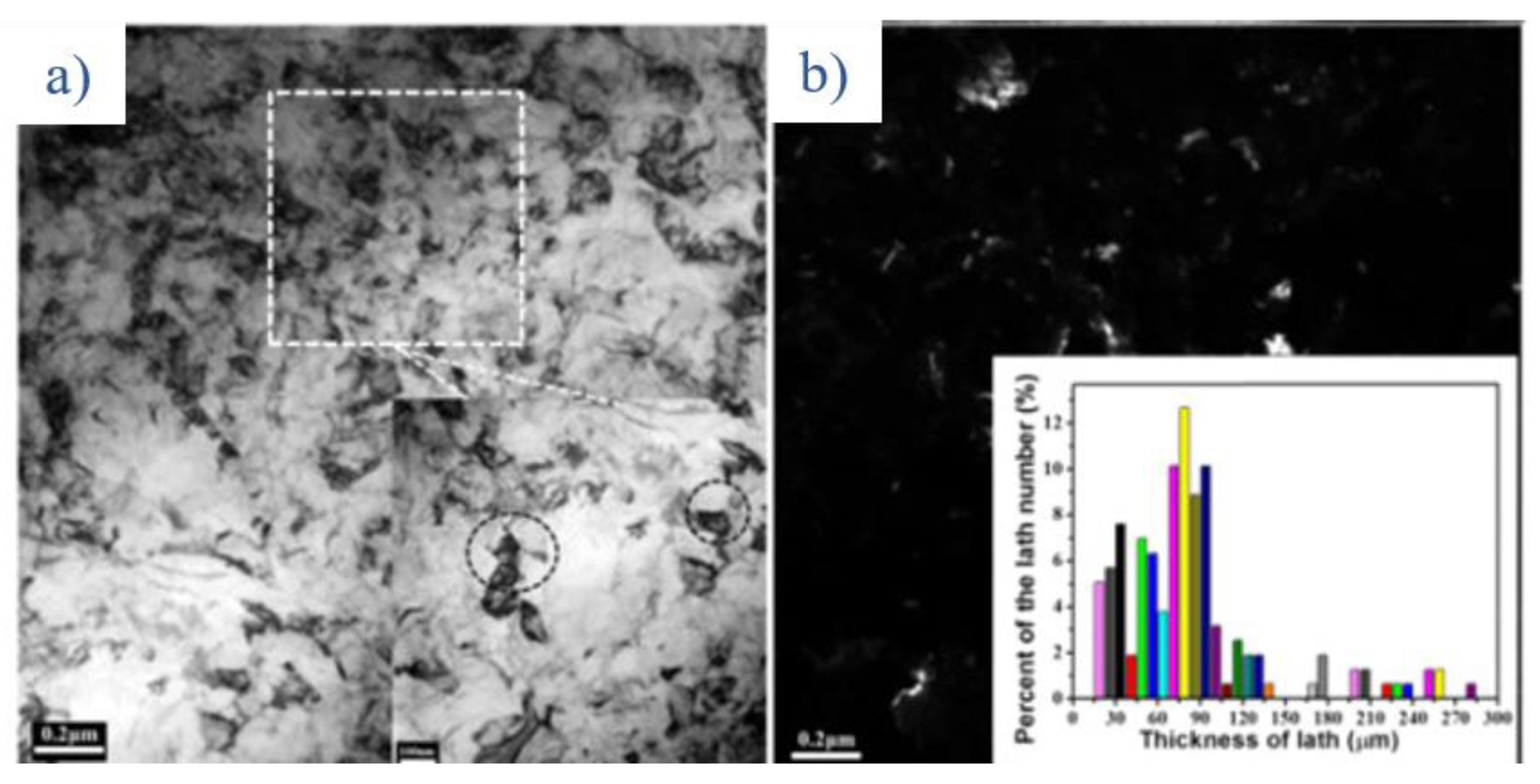
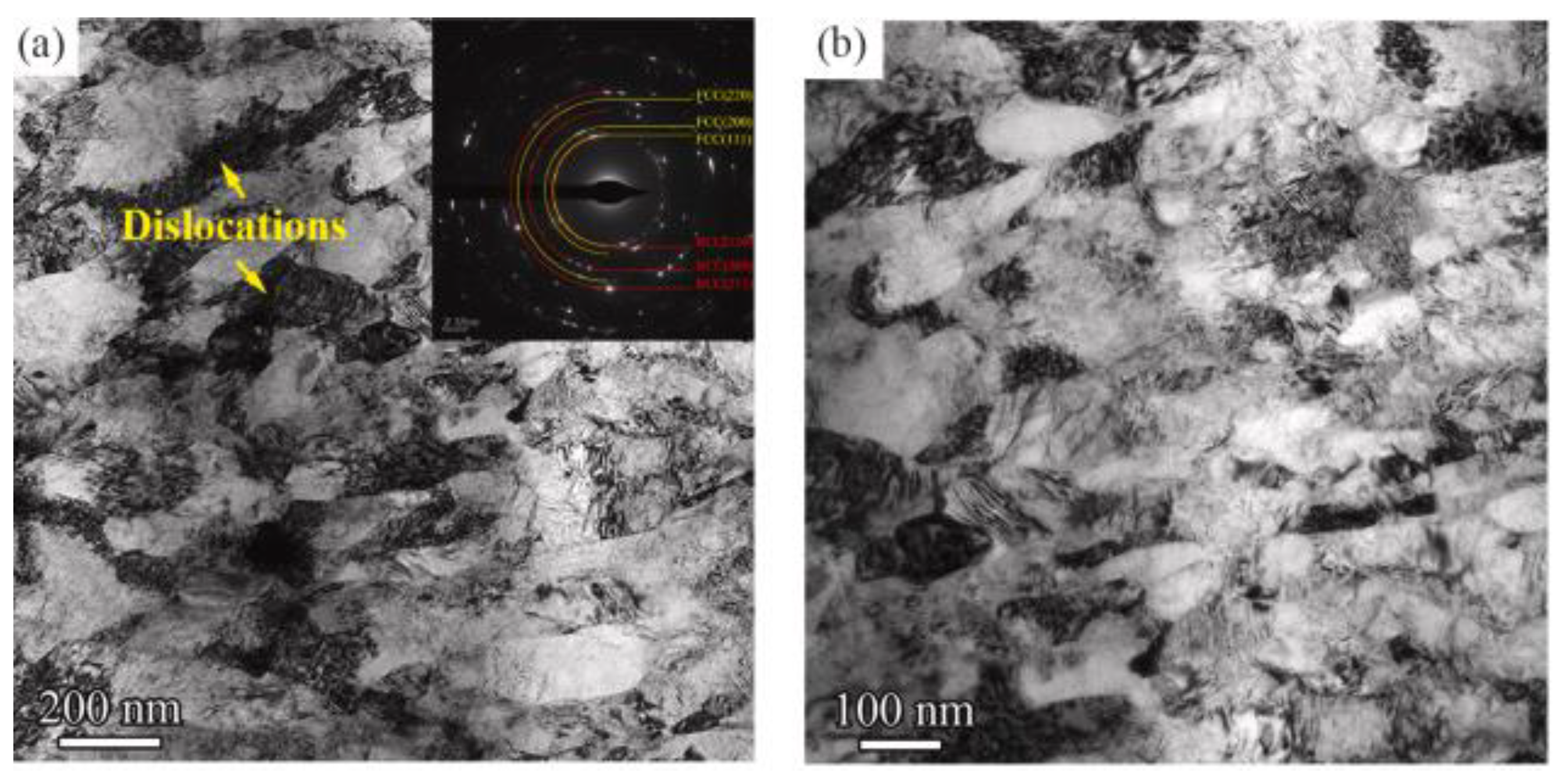
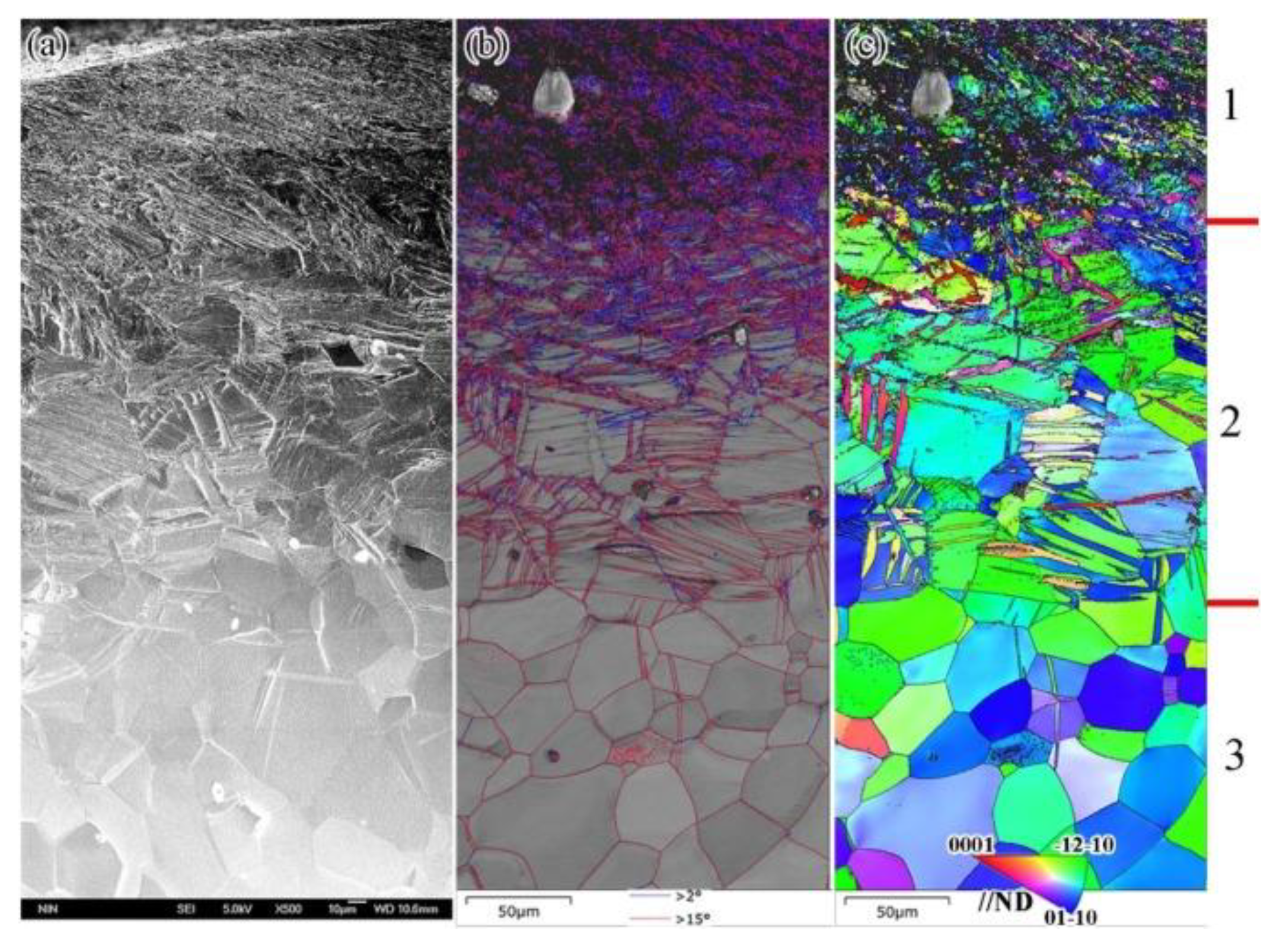
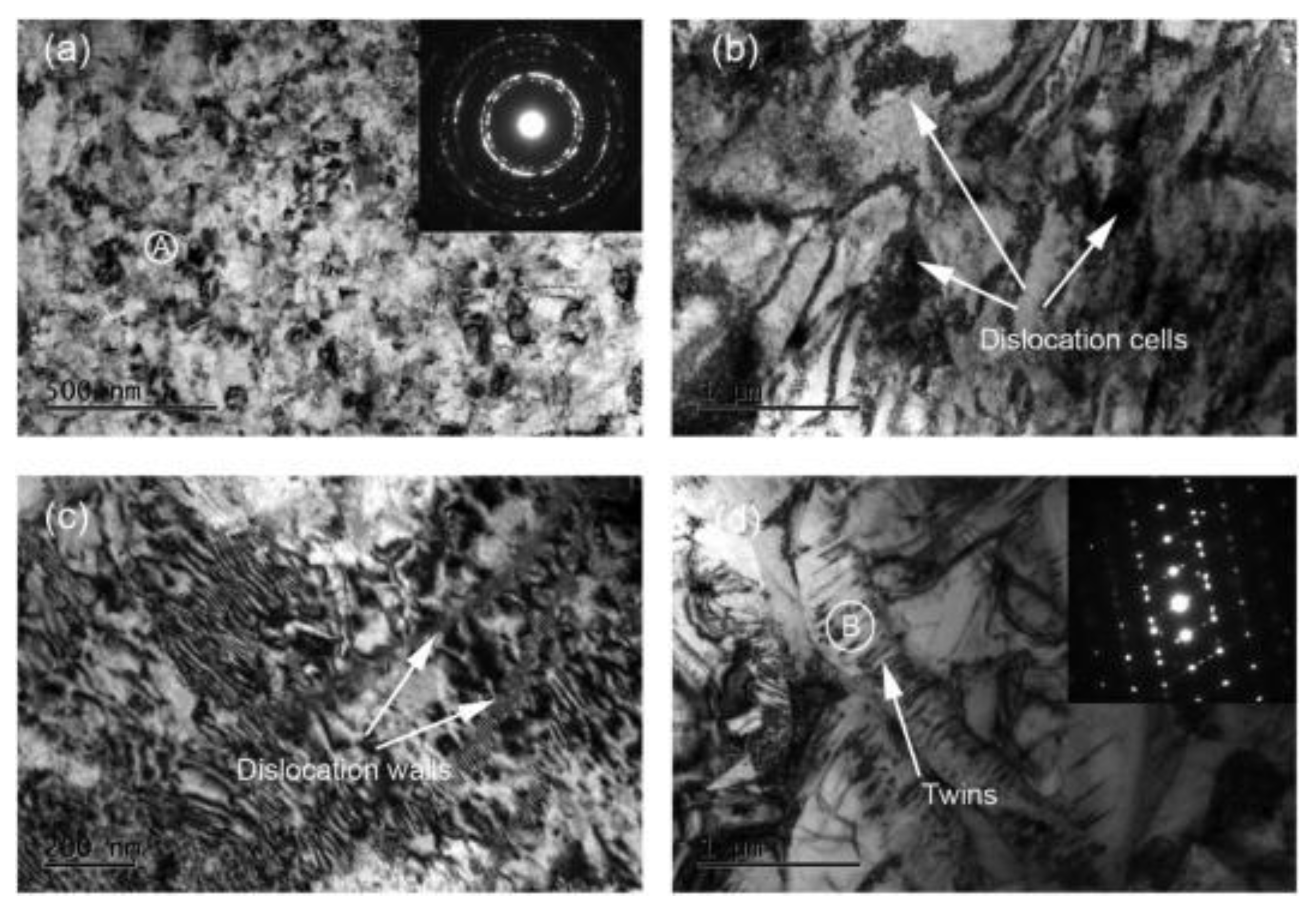
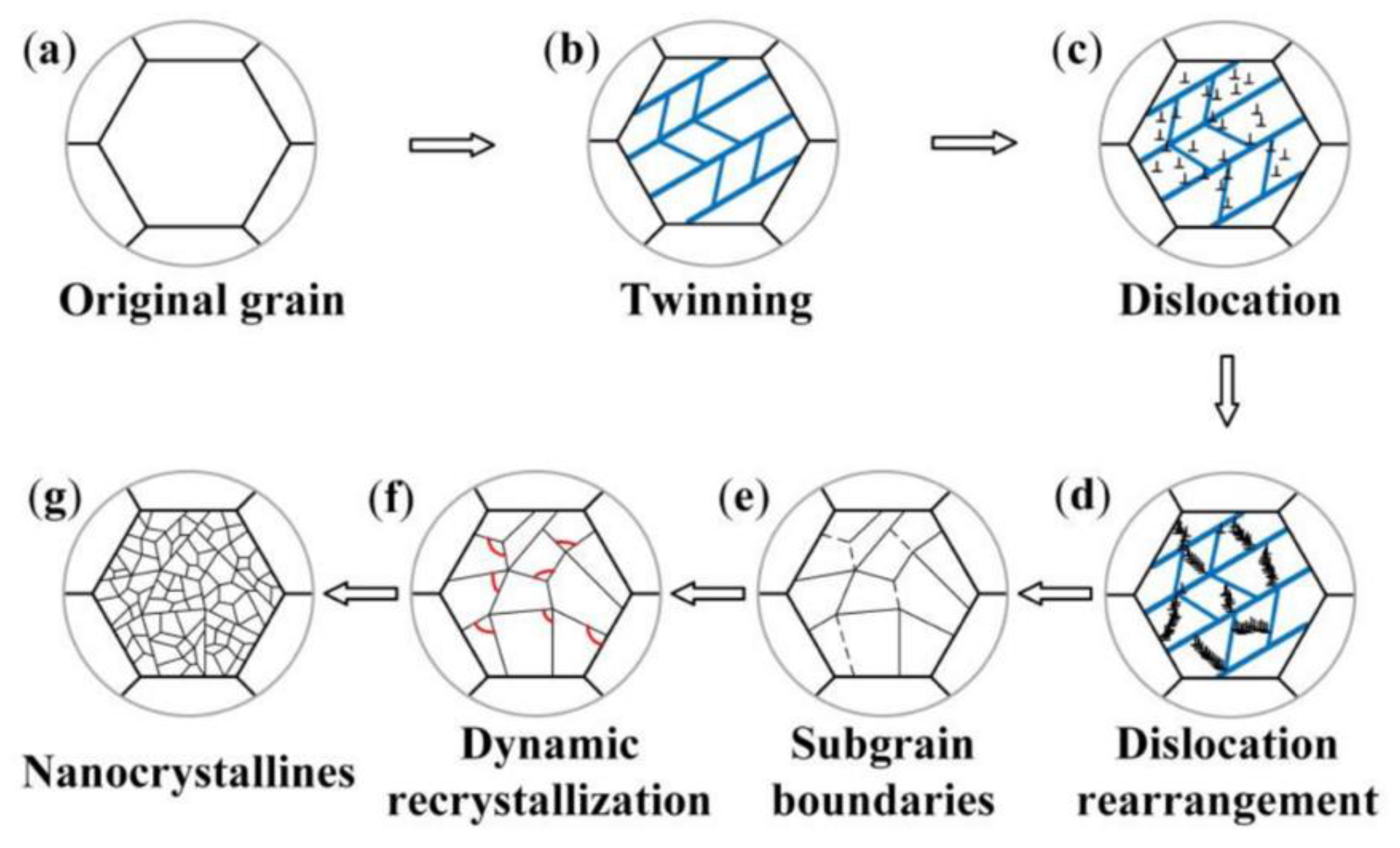

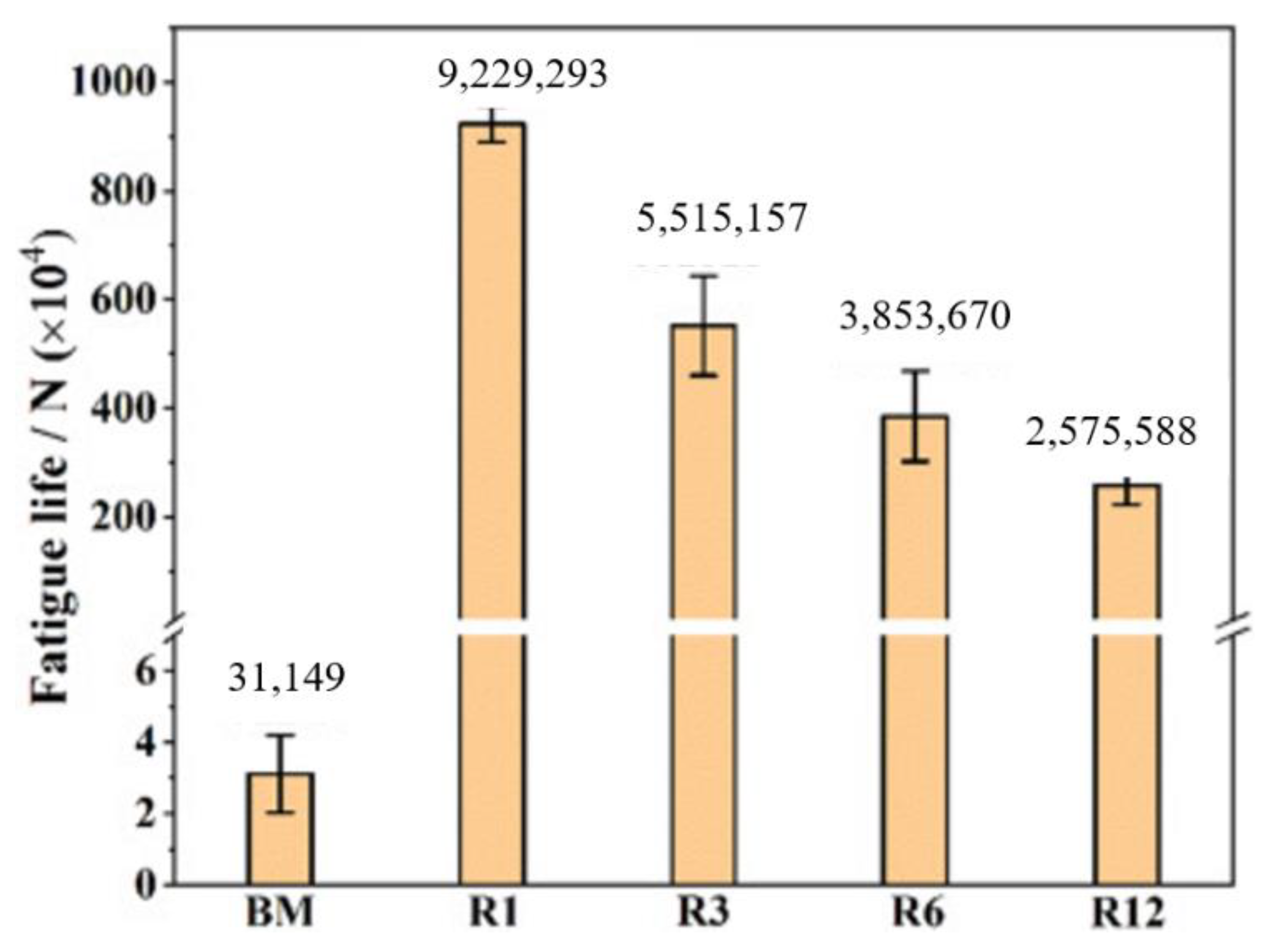
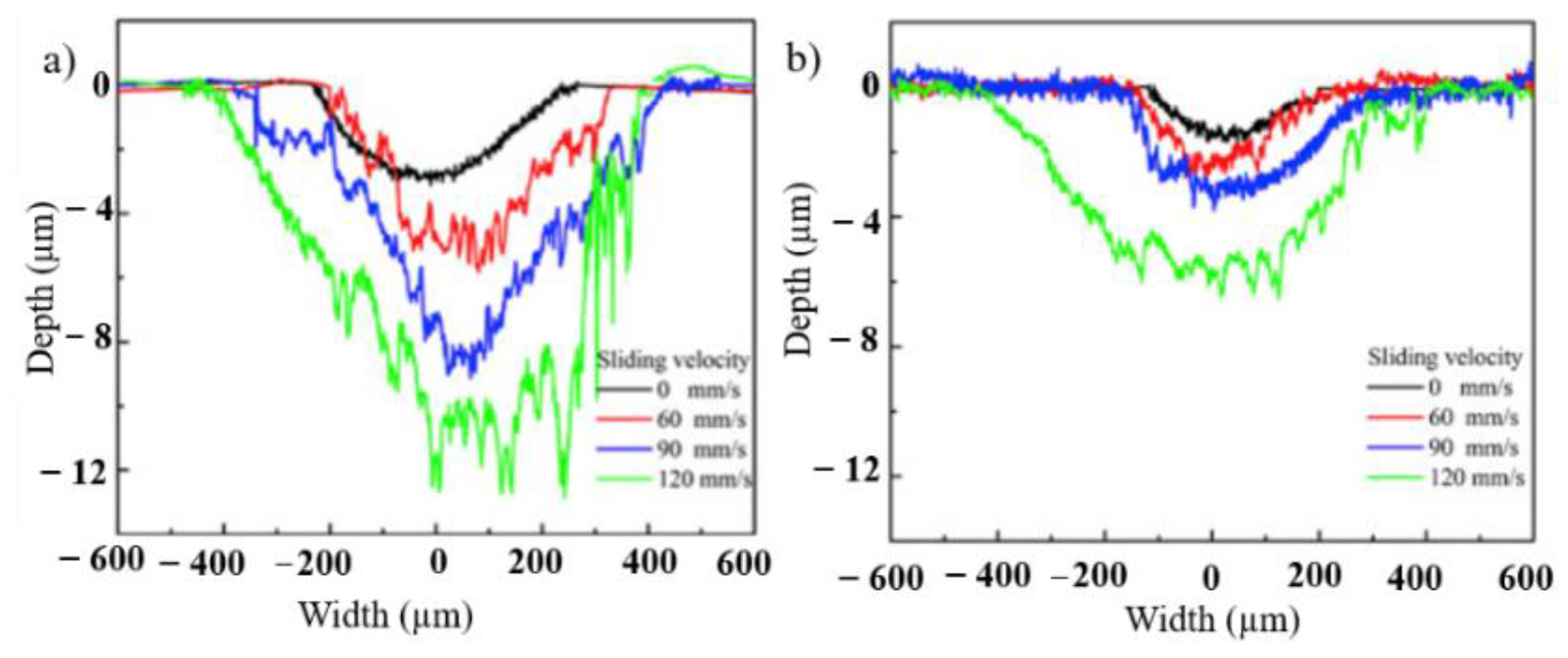
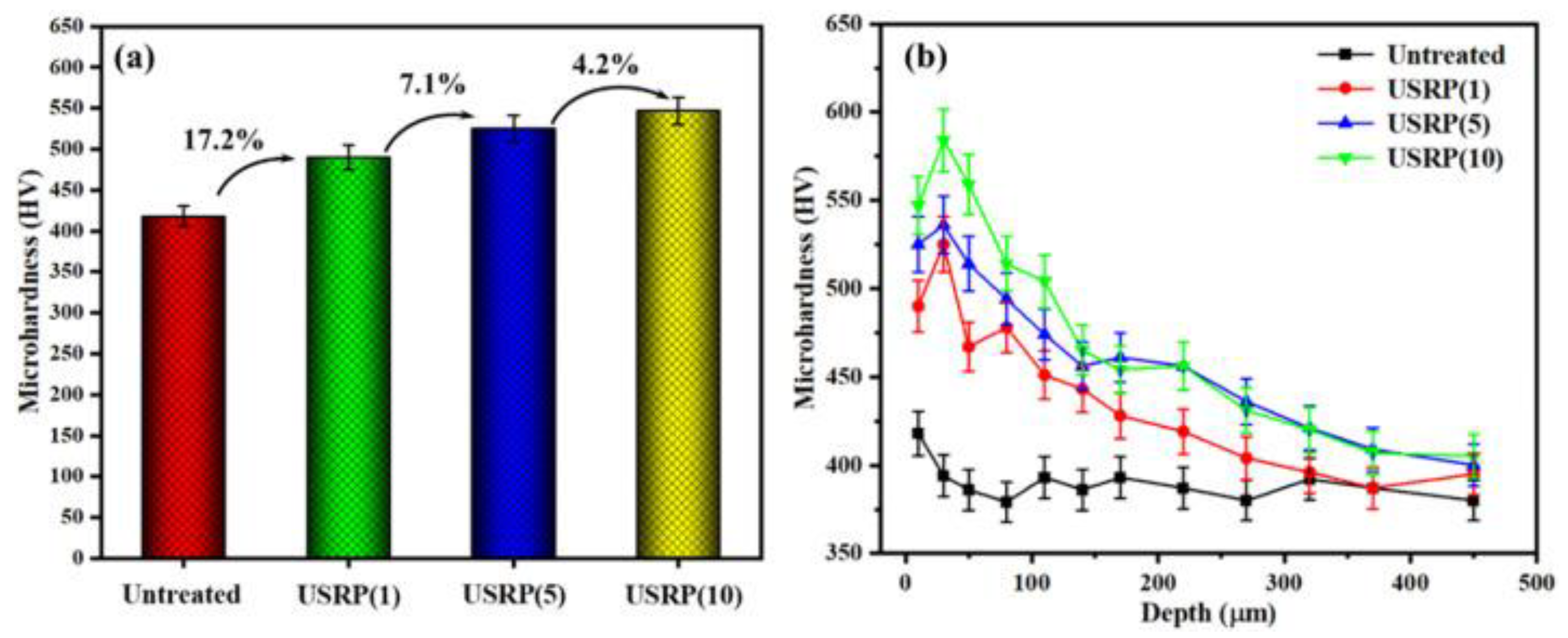
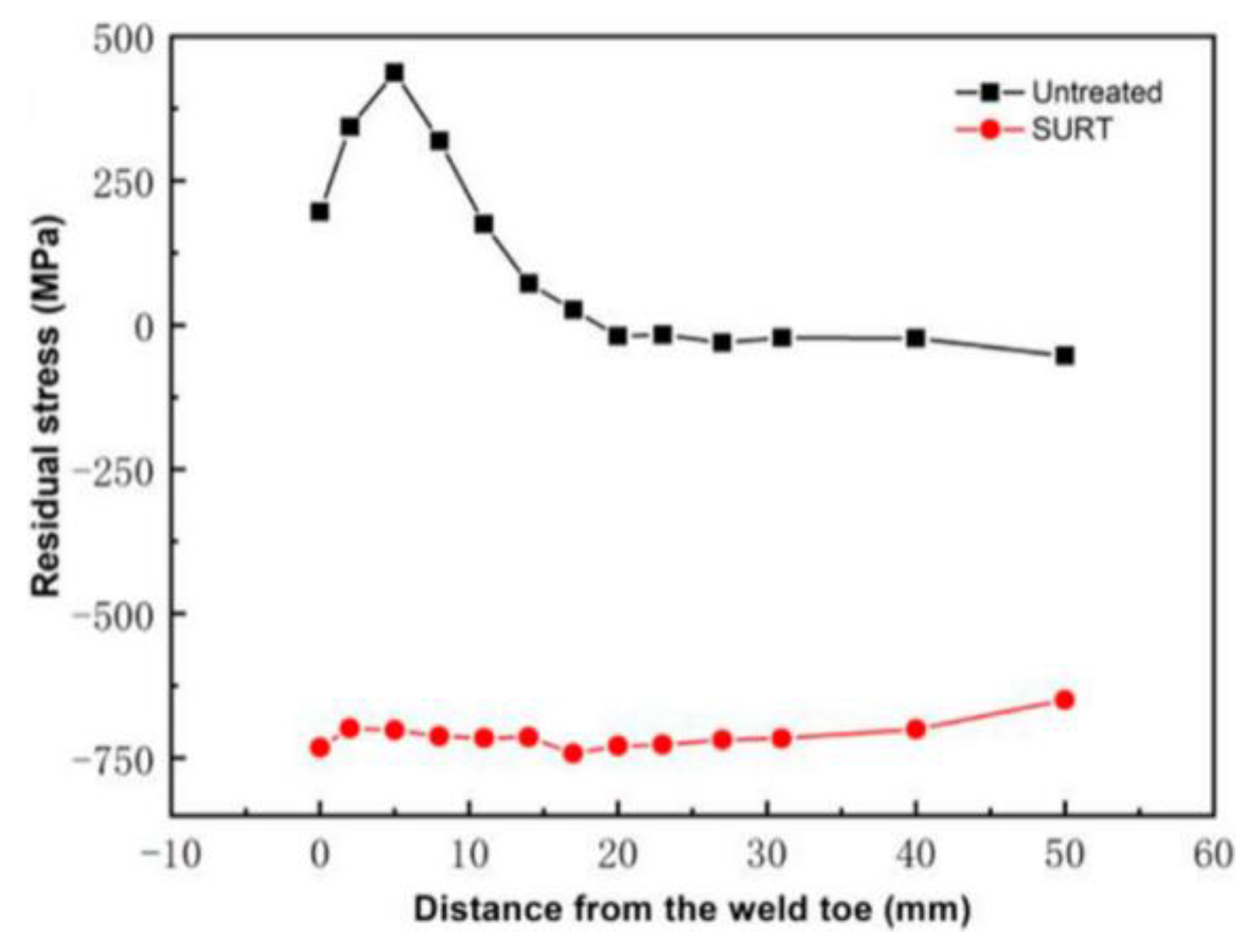
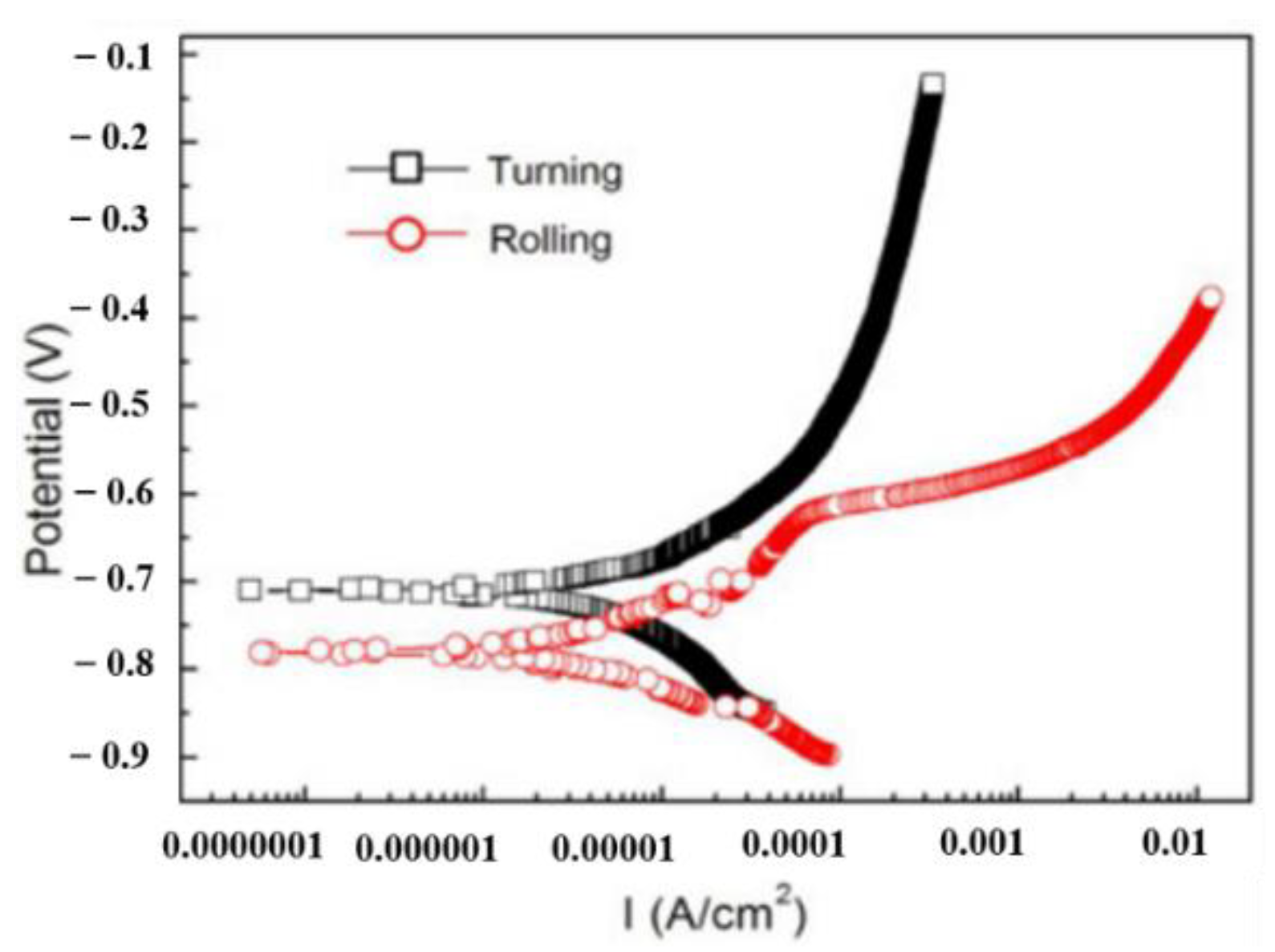
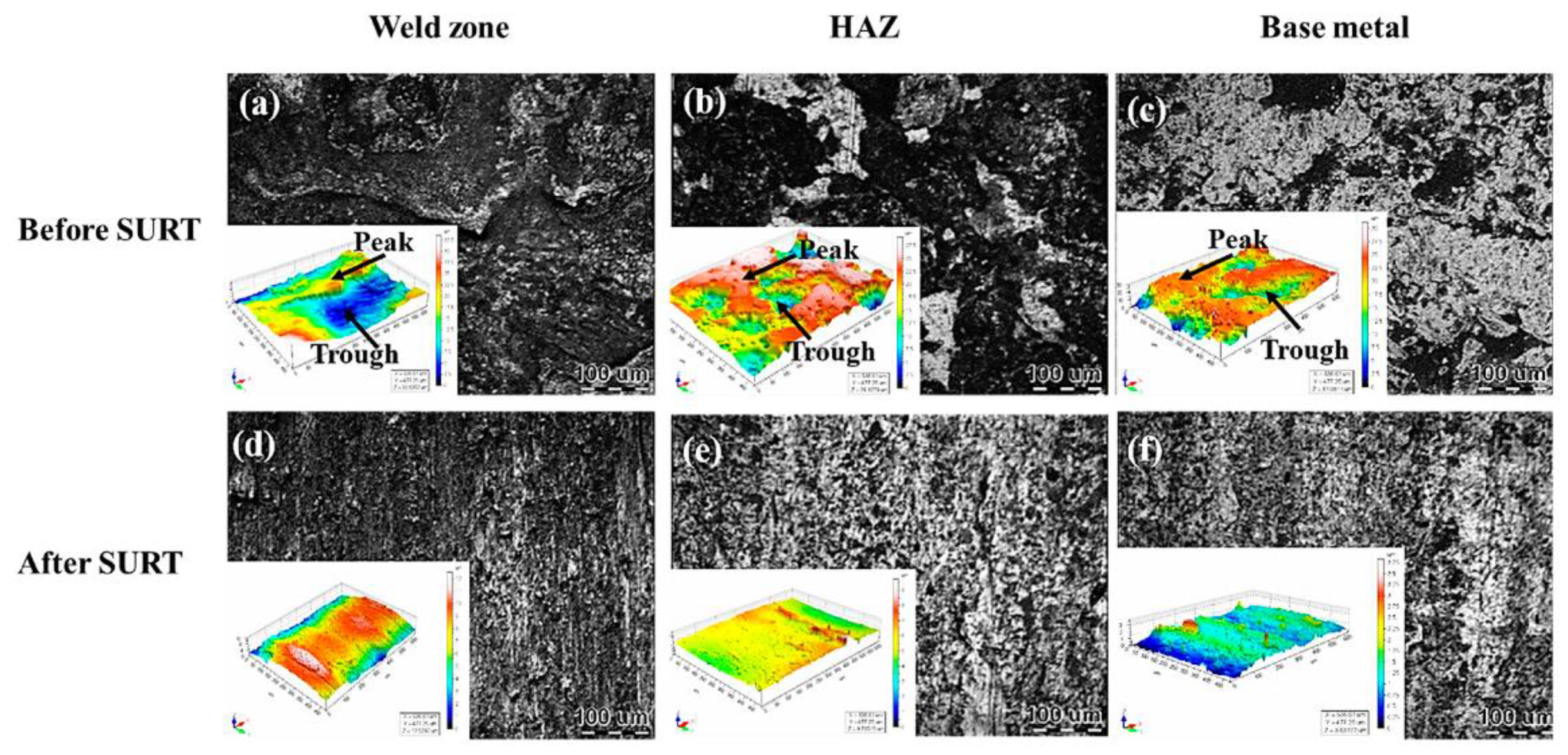
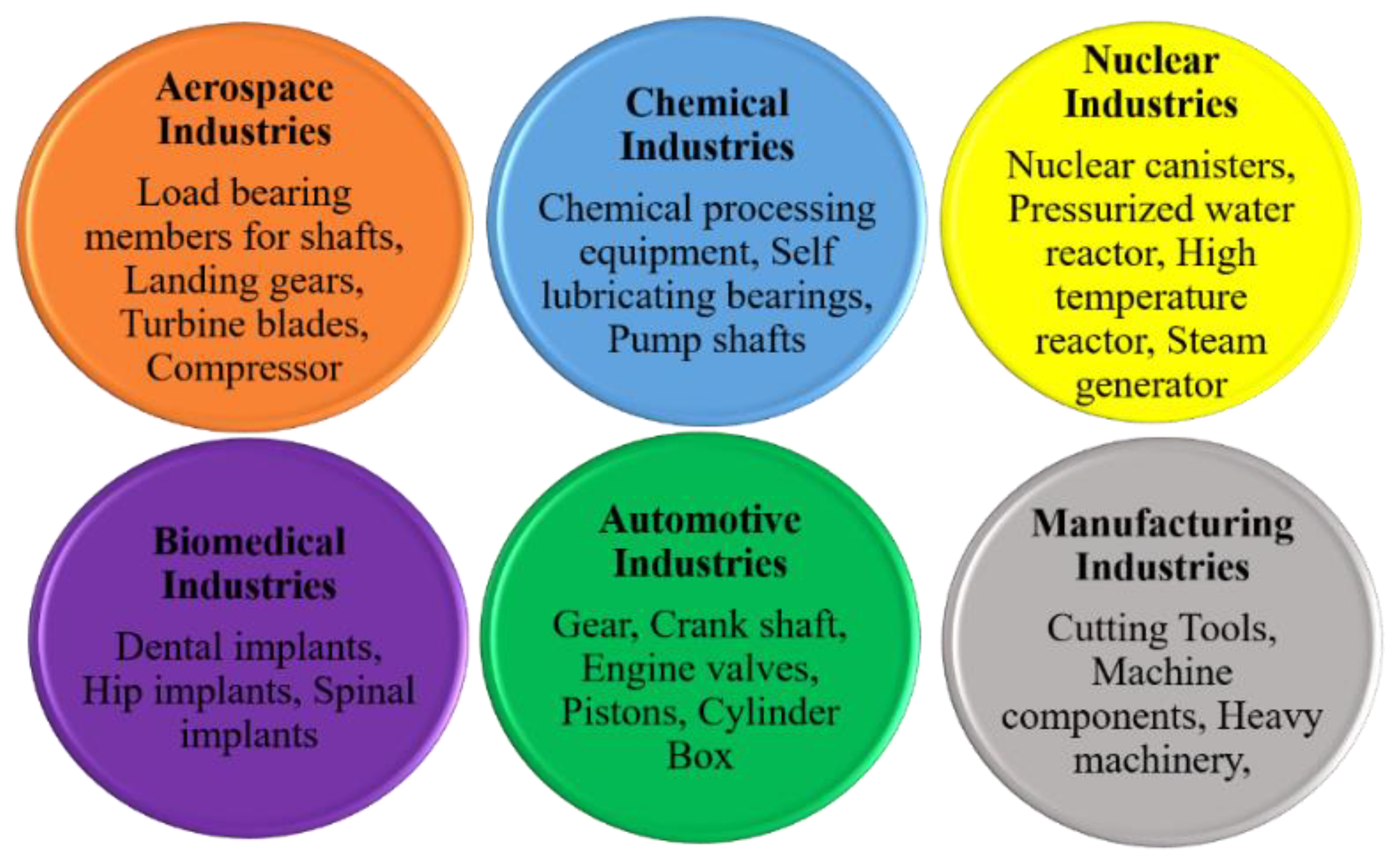
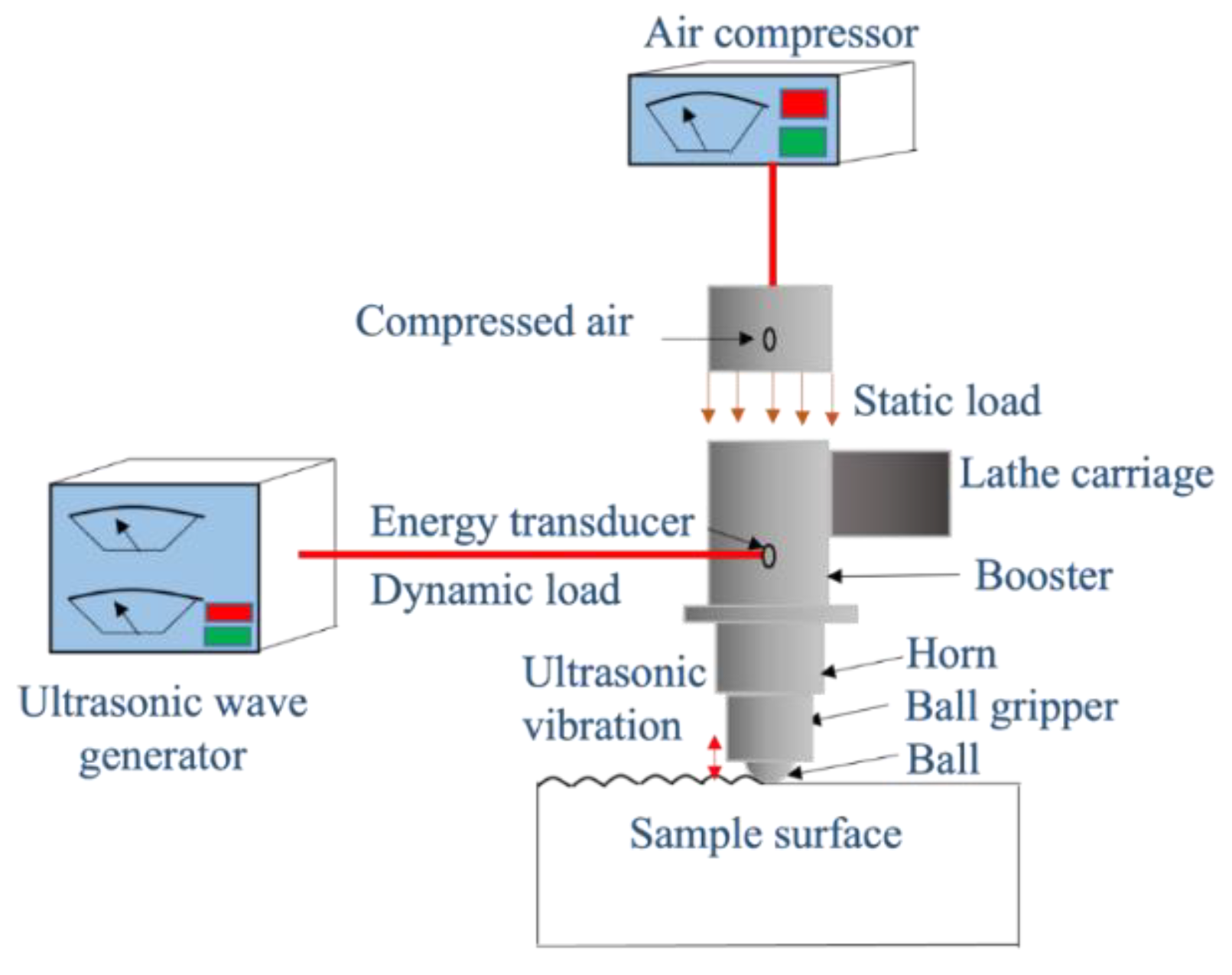
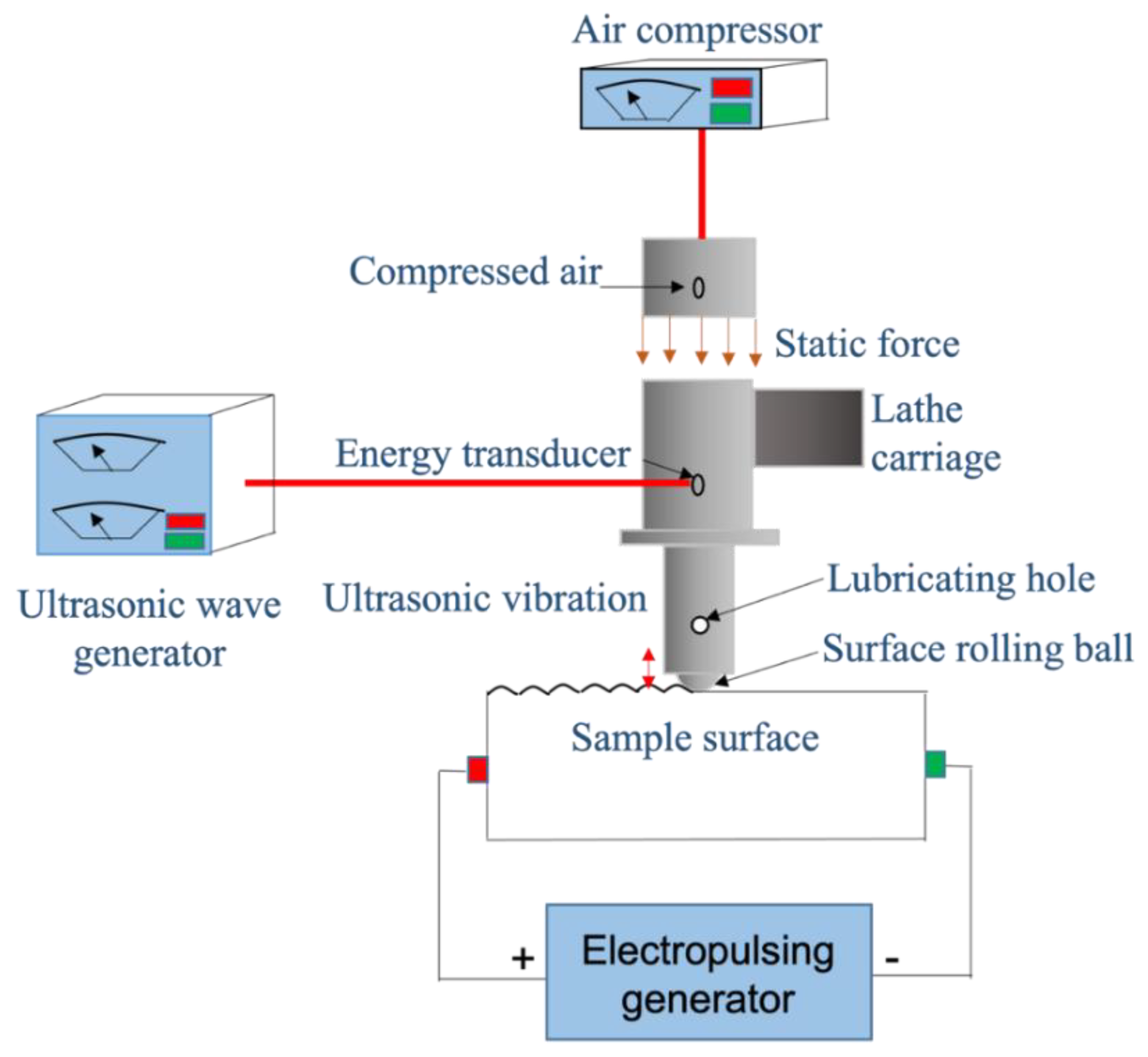
| Materials | Static Force or Pressure | Roller Material, Hardness and Diameter | Frequency and Amplitude | Observation |
|---|---|---|---|---|
| 33Cr23Ni8Mn3 [25] | 900 N | Carbide; Unspecified; 15 mm | 20 kHz; 30 kHz; 10 μm | Improved fatigue resistance by 38.3% Increase in residual stress by 3.6 times Surface roughness reduced by 75% Microhardness increases by 31.3% |
| 17-4 PH SS [26] | 600 N | WC/Co; Unspecified; 12 mm | 28 kHz; 15 μm | Grain refinement by 200 nm Surface roughness reduced by 57.69% Microhardness increased by 20% Yield strength increased by 24.3% Elongation reduced by 52.6% Elastic modulus increased by 10.93% |
| 25CrNi2MoV Steel [27] | 900 N | Carbide alloy; Unspecified; Unspecified | 25 kHz; 12 µm | Surface roughness reduced by 76.2% Increase in microhardness by 11.3% Increase in residual stress by 3.5 times |
| 300M steel [28] | 550 N | WC/Co; 80 HRC; 14 mm | 28 kHz; 12 µm | Fatigue life improvement by 21 times Yield strength Increased by 5.9% Tensile strength increased by 3.8% Elongation reduced by 24.3% |
| 17Cr2Ni2MoVNb steel [29] | 600 N, 800 N, 1000 N, 1200 N | Unspecified | 25 kHz; 6 µm | Surface roughness reduced by 67.3% Microhardness increased by 14% Residual stress increased by 57.8% Fatigue resistance increased by 20.8 times |
| 25CrNi2MoV steel [30] | 800 N, 1000 N, 1200 N, 1400 N | GCr15; 60 HRC; 40 mm | 25 kHz; 10 µm | Reduction of friction coefficient by 16.7% Reduction of wear volume by 39.5% |
| Ti5Al4Mo6V2Nb1Fe Titanium Alloy [31] | 600 N, 700 N, 800 N,900 N 1000 N | Carbide; 90.5 HRA; 10 mm | 30 kHz; 3 μm; 7 μm; 9 μm | Grains refined to 8 nm Deformation layer thickness 230 μm Surface roughness reduced by 67% Microhardness increased by 20% Wear rate decreased by 70% |
| TB8 Titanium Alloy [32] | 480 MPa, 630 MPa, 780 MPa | WC/Co; Unspecified; Unspecified | 25 kHz; Unspecified | Increase in microhardness by 71% Surface roughness reduced by 87.5% Fatigue resistance Improved by 14% |
| CP Ti (grade 2) [34] | 600 N | Unspecified | Unspecified; 6 µm | Tensile strength increased by 53.4% UTS increased by 45.1% |
| TiB2/2024Al [35] | 180 N | WC-Co; 80 HRC; 14 mm | 28 kHz; 6 µm | Microhardness increased by 50% Elastic modulus increased by 8.8% Yield strength increased by 12.7% |
| 7050-T7451 Aluminum Alloy [36] | Unspecified Load | GCr15; Unspecified; 9 mm | 5 kHz; 10 kHz; 15 kHz; 20 kHz; Unspecified | Surface roughness reduced by 84.8% Microhardness increased by 41.3% |
| AZ31B Magnesium Alloy [38] | 400 N | WC/Co; Unspecified Hardness; 14 mm | 30 kHz; 10 μm | Grain refinement by 420 μm Microhardness increased by 40% Increase in elasticity Yield strength increased by 28% UTS increased by 8% |
| Mg-15Gd-1Zn-0.4Zr alloy [39] | 0.1 MPa, 0.2 MPa, 0.3 MPa, 0.4 MPa, 0.5 MPa | SS; Unspecified Hardness; 14 mm | 30 kHz; 15 μm | Grain refinement by 1.2 times Surface roughness reduced by 93.54% Microhardness Increased by 37.4% Yield strength increased by 89% |
| AZ31B Mg alloy [40] | 0 MPa, 0.1 MPa, 0.15 MP; 0.2 MPa, 025 MPa | Carbide; Unspecified Hardness; 7 mm | 30 kHz; 7 μm | Grain refinement by 50% Surface roughness reduced by 91.8% Microhardness increased by 83.81% Yield strength increased by 24.3 times |
| Uranium metal [41] | 300 N, 600N, 900 N | Unspecified Material; 80 HRC; 14 mm | 28 kHz; 4 µm; 6 µm; 8 µm | Surface Roughness reduced by 34.5% Enhancement in corrosion resistance |
| Materials | Process | Roller material, Hardness and Diameter, Static Force or Pressure | Frequency and Amplitude | Observation |
|---|---|---|---|---|
| AISI 304 [114] | UNSM | Unspecified; Unspecified; 2.38 mm; 40 N | 20 kHz; 30 µm | Microhardness is increased by 50% Surface roughness is reduced by 30% RCS increased from −70 MPa to −1703 MPa |
| 300M Steel [126] | UNSM | WC; Unspecified Unspecified; 50 N | 20 kHz; 24 µm | SPD layer of 32 µm were observed Hardness enhancement is attributed to the refinement of lath martensite Wear rate is reduced by 39.7% |
| AISI M4 high-speed tool steel [127] | UNSM | WC; Unspecified; 2.38 mm; 10N, 30 N, 50 N | 30 kHz; 30 µm | Grain refinement by 25.8% Microhardness increased by 24.1% Surface roughness decreased by 88.3% Wear rate reduced by 5.85 times |
| AA7075 Aluminum Alloy [99] | UNSM | WC; Unspecified; 2.38 mm; 30 N | 20 kHz; 30 µm | Surface roughness reduced by 15.75% RCS increased by 78 times Microhardness increased by 26%. Wear Rate Reduced by: 2.75 times |
| AZ91D Magnesium Alloy [102] | UNSM | WC; Unspecified; 2.38 mm; 10 N, 20 N, 30 N | 25 kHz; 30 µm | Microhardness increased by 28.3% CoF reduced by 23%. The wear rate is reduced by 30%. Grain size is reduced to 39 nm. |
| Inconel 718 [89] | UNSM | WC; Unspecified; 2.5 mm; 10 N, 50 N | 25 kHz; 40 µm | Microhardness improved by 44% Fatigue life increased 5.25 times Grain refined to 21.95 nm RCS of −1100 MPa observed on the surface |
| Cu-alloy [105] | UNSM | WC; Unspecified; 2.38 mm; 20 N | 20 kHz; 30 µm | Surface roughness Reduces by: 62.5% Nano hardness increased by 2.29 times. Coefficient of friction reduced by 49.4% |
| Ti64 [113] | Laser-assisted UNSM | WC; Unspecified; 2.38 mm; 50 N | 20 kHz; 24 µm | Microhardness improved by 75.2% compared to the as-received specimen Nanocomposite microstructure observed with nanoscale precipitates |
| AISI 304 SS [123] | EP-USRP | Unspecified; 80 HRC; 14 mm | 30 kHz; 8 μm | Residual stress improved by 4.8 times Surface roughness reduced by 20% |
| 304 Austenitic SS [115] | EP-USRP | Unspecified; 80 HRC; 14 mm; 700 N | 30 kHz; 8 μm | Improved surface hardness by 119.5% for EP-USRP, and 102.6% for USRP Surface roughness reduced by 83.3% for EP-USRP With the increase in current density, surface roughness slightly reduces for EP-USRP |
| Ti6Al4V [125] | EP-USRP | Unspecified; 80HRC; 14 mm; 1500 N | 30 kHz; 8 μm | Improved surface hardness up to 28.3% for EP-USRP, and 41% for USRP Increase in residual stress by 12.8 times in USRP and 15.6 times in EP-USRP Surface roughness reduced by 84.6% in EP-USRP |
| CrMnFeCoNi High entropy alloy [128] | EP-USRP | Cemented carbide; unspecified; 14 mm; 800 N | 30 kHz; 6 μm | Tensile strength is improved by 3% by EP-USRP and 8.7% by USRP. Observed 21.9% elongation in EP-USRP and 14.9% in USRP. |
| Commercial Pure Ti [129] | EP-USRP | Unspecified; >90 HRA; 14 mm; 1030 N | 27 Hz; 6 μm | Microhardness increased by 46.7% in EP-USRP and 26.7% in USRP. Surface roughness decreased by 97% in EP-USRP and 95.6% in USRP. |
| Inconel 718 [130] | EP-USRP | Unspecified; 90 HRC;12 mm; 1090 N | 300 Hz, 400 Hz, 500 Hz; 6 μm | Dislocation mobility was enhanced Increase in SFE due to thermal and athermal effect Superior grain refinement Increase in impact depth Excellent thermal stability |
| Material | Combination Method | Static force, Roller Material, Hardness, Diameter, Ultrasonic Frequency, and Amplitude | Results |
|---|---|---|---|
| 17Cr2Ni2MoVNb steel [131] | USRP followed by shot peening followed by USRP | 600 N, 800 N, 1000 N; Unspecified; Unspecified; Unspecified; 25 kHz; 6 µm | Significant ultra-fine grains Improved surface microhardness RCS of −1099 MPa was observed on the surface. Microhardness increased by 39.50% Lowest surface roughness |
| Die Steel Cr12MoV [132] | Deep cryogenic treatment followed by USRP | 1246 N; Unspecified; 90 HRA; 12mm; 30 kHz; 6 µm | Surface roughness reduced from 0.284 µm to 0.265 µm Microhardness increased by 6.2% HV Improvement in wear resistance |
| Ti6Al4V [72] | Heat treatment followed by USRP | 900 N; Unspecified, 80 HRC; 15 mm; 30 kHz;10 µm | Microhardness increased by 43.7% HV Fatigue strength increased by 40 MPa Fatigue life enhanced UTS and yield strength increased by 3.6% and 3% |
| AZ91D Mg Alloy [68] | USRP followed by recovery heat treatment | 240 N; Unspecified; Unspecified; 15 mm; 20 kHz; 7.5 µm | Wear resistance of the recovery heat-treated samples I higher at 150 °C, Recovery heat treatment affected microstructure and mechanical properties Microhardness after recovery treatment has decreased |
| Inconel 625 [133] | Laser cladding followed by USRP | 300 N; Unspecified; Unspecified; 14 mm; 28 kHz; 5 µm | Surface roughness reduced from 0.335 µm to 0.12 µm. Nanolayer formation with a depth of 20 μm Low CoF and high wear resistance The wear mechanism remains the same. Dendritic grains were refined. |
| Cr-Ni alloy [134] | Laser cladding followed by hard turning and USRP | 300 N; Carbide; Unspecified; 14 mm; 30 kHz; 7 µm | Surface roughness reduced by 89%. Microhardness increased by 34.6%. Elastic modulus increased by 10.8%. Fracture toughness increased by 106%. |
| CrMnFeCoNi High-Entropy Alloys [84] | Laser additive manufacturing followed by USRP | 300 N; WC/Co; Unspecified; 14 mm; 30 kHz; 20 µm | Microhardness increased Low CoF and high wear resistance Equiaxed crystals on the top surface replaced with NC layers |
| Inconel 690TT [64] | USRP followed by plasma nitriding | Unspecified; WC/Co; Unspecified; 20 mm; 28 Hz; 20 µm | Compared to untreated specimens, microhardness increased by 348%. Compared to untreated specimens, wear volume decreased by 98%. |
| 20CrMoH steel [135] | Carburizing followed by USRP | 900 N, Unspecified; Unspecified; 15 mm; 25 kHz; 10 µm | RCS of −920 MPa was observed on the surface. Microhardness increased from 370 HV to 900 HV on the surface |
| AISI 1045 steel [136] | USRP followed by physical vapor deposition | 0.1 MPa; Wolfram Carbide; 14 mm; 28 kHz; 7 µm | Increased the adhesion performance Microhardness, elastic modulus, RCS, and surface wettability were enhanced |
Publisher’s Note: MDPI stays neutral with regard to jurisdictional claims in published maps and institutional affiliations. |
© 2021 by the authors. Licensee MDPI, Basel, Switzerland. This article is an open access article distributed under the terms and conditions of the Creative Commons Attribution (CC BY) license (https://creativecommons.org/licenses/by/4.0/).
Share and Cite
John, M.; Ralls, A.M.; Dooley, S.C.; Thazhathidathil, A.K.V.; Perka, A.K.; Kuruveri, U.B.; Menezes, P.L. Ultrasonic Surface Rolling Process: Properties, Characterization, and Applications. Appl. Sci. 2021, 11, 10986. https://doi.org/10.3390/app112210986
John M, Ralls AM, Dooley SC, Thazhathidathil AKV, Perka AK, Kuruveri UB, Menezes PL. Ultrasonic Surface Rolling Process: Properties, Characterization, and Applications. Applied Sciences. 2021; 11(22):10986. https://doi.org/10.3390/app112210986
Chicago/Turabian StyleJohn, Merbin, Alessandro M. Ralls, Scott C. Dooley, Akhil Kishore Vellooridathil Thazhathidathil, Ashok Kumar Perka, Udaya Bhat Kuruveri, and Pradeep L. Menezes. 2021. "Ultrasonic Surface Rolling Process: Properties, Characterization, and Applications" Applied Sciences 11, no. 22: 10986. https://doi.org/10.3390/app112210986
APA StyleJohn, M., Ralls, A. M., Dooley, S. C., Thazhathidathil, A. K. V., Perka, A. K., Kuruveri, U. B., & Menezes, P. L. (2021). Ultrasonic Surface Rolling Process: Properties, Characterization, and Applications. Applied Sciences, 11(22), 10986. https://doi.org/10.3390/app112210986







